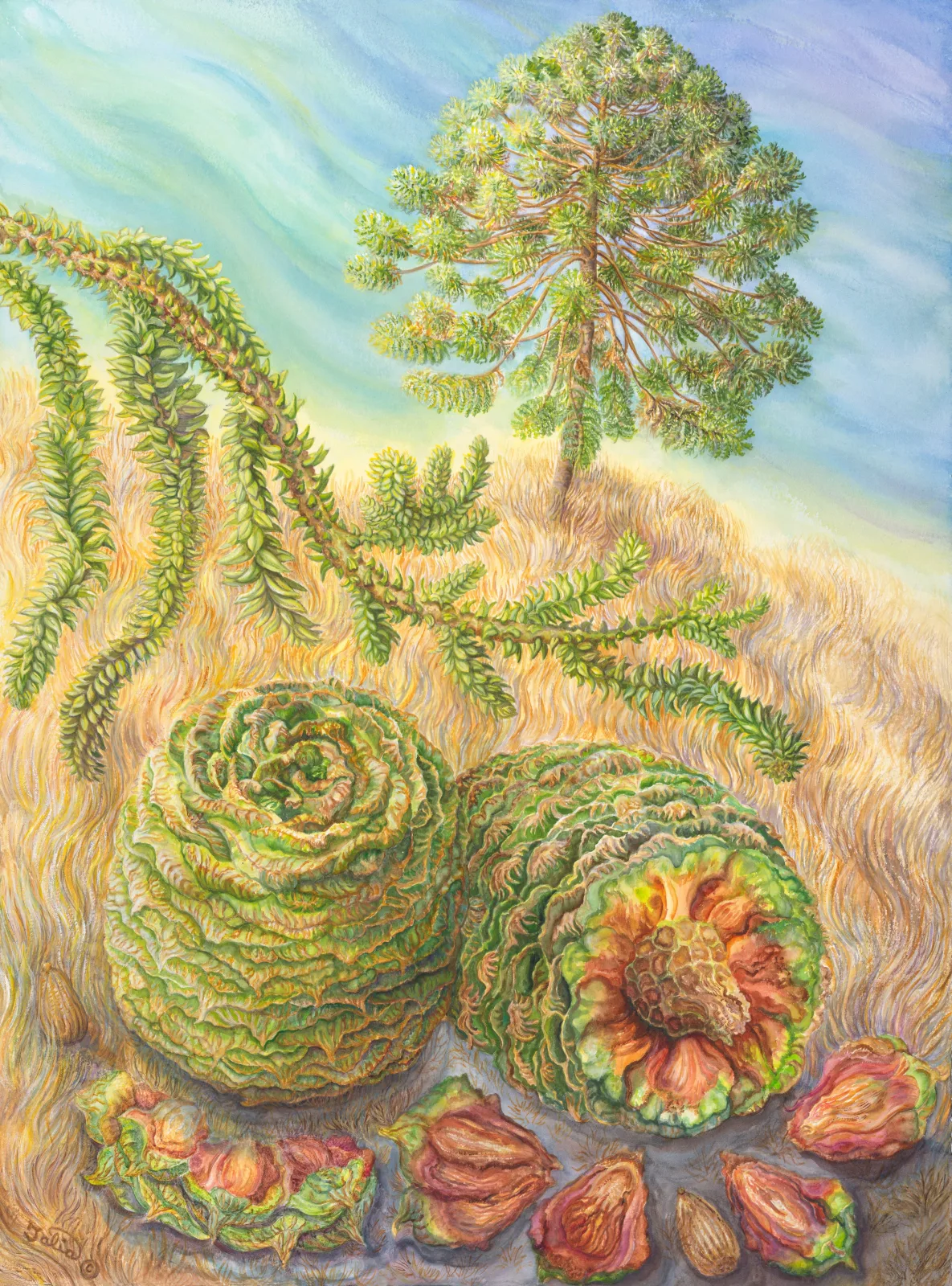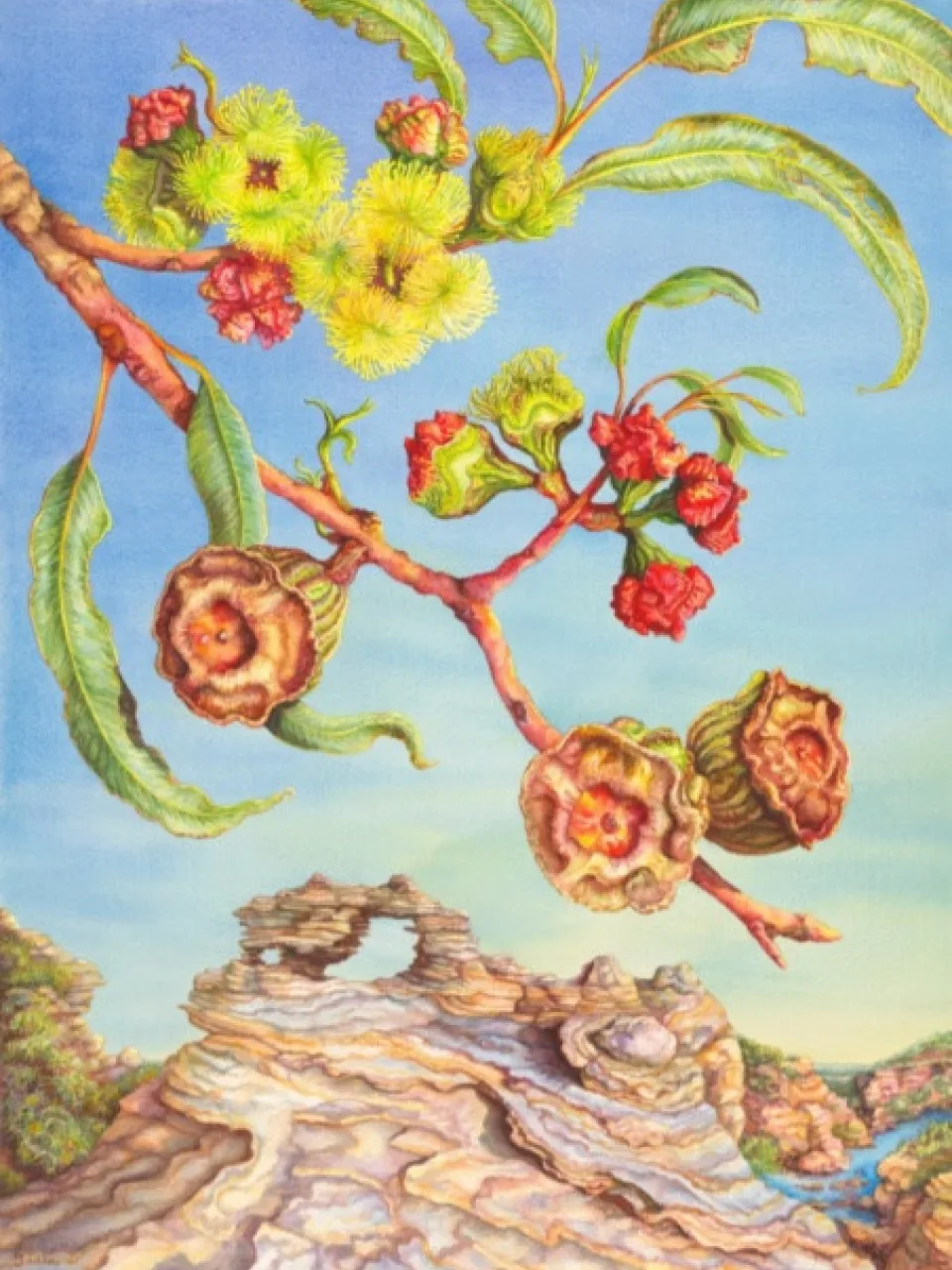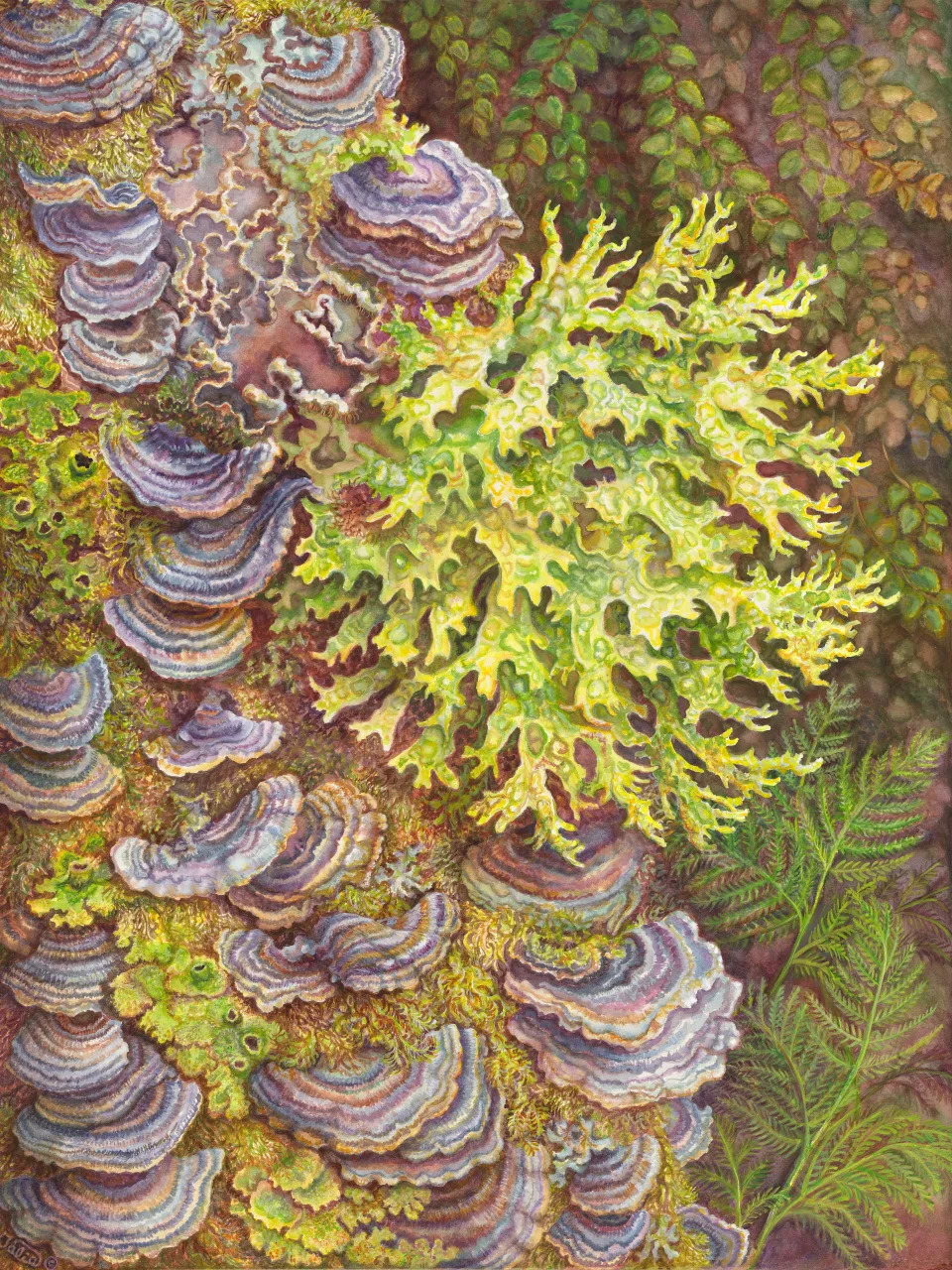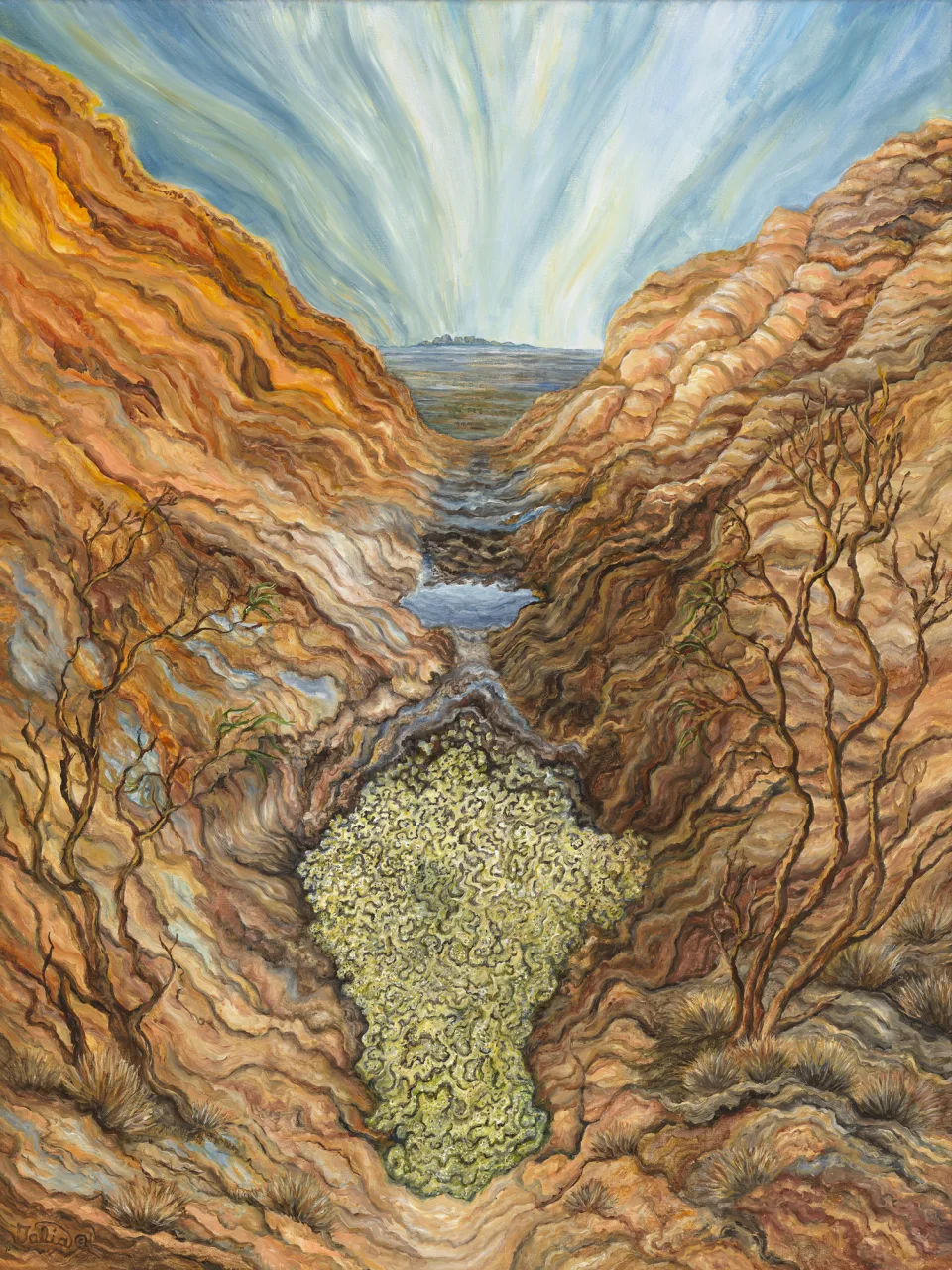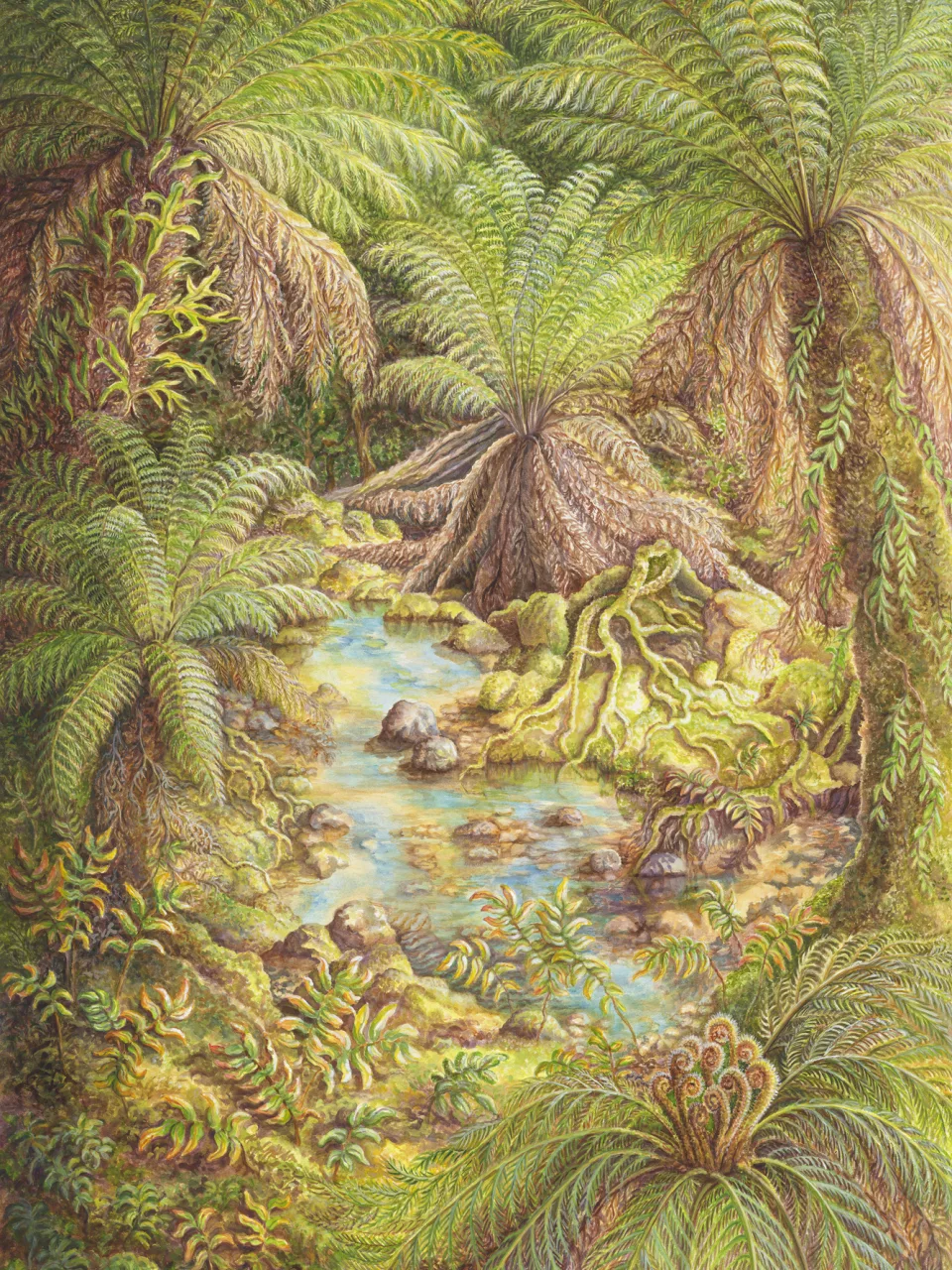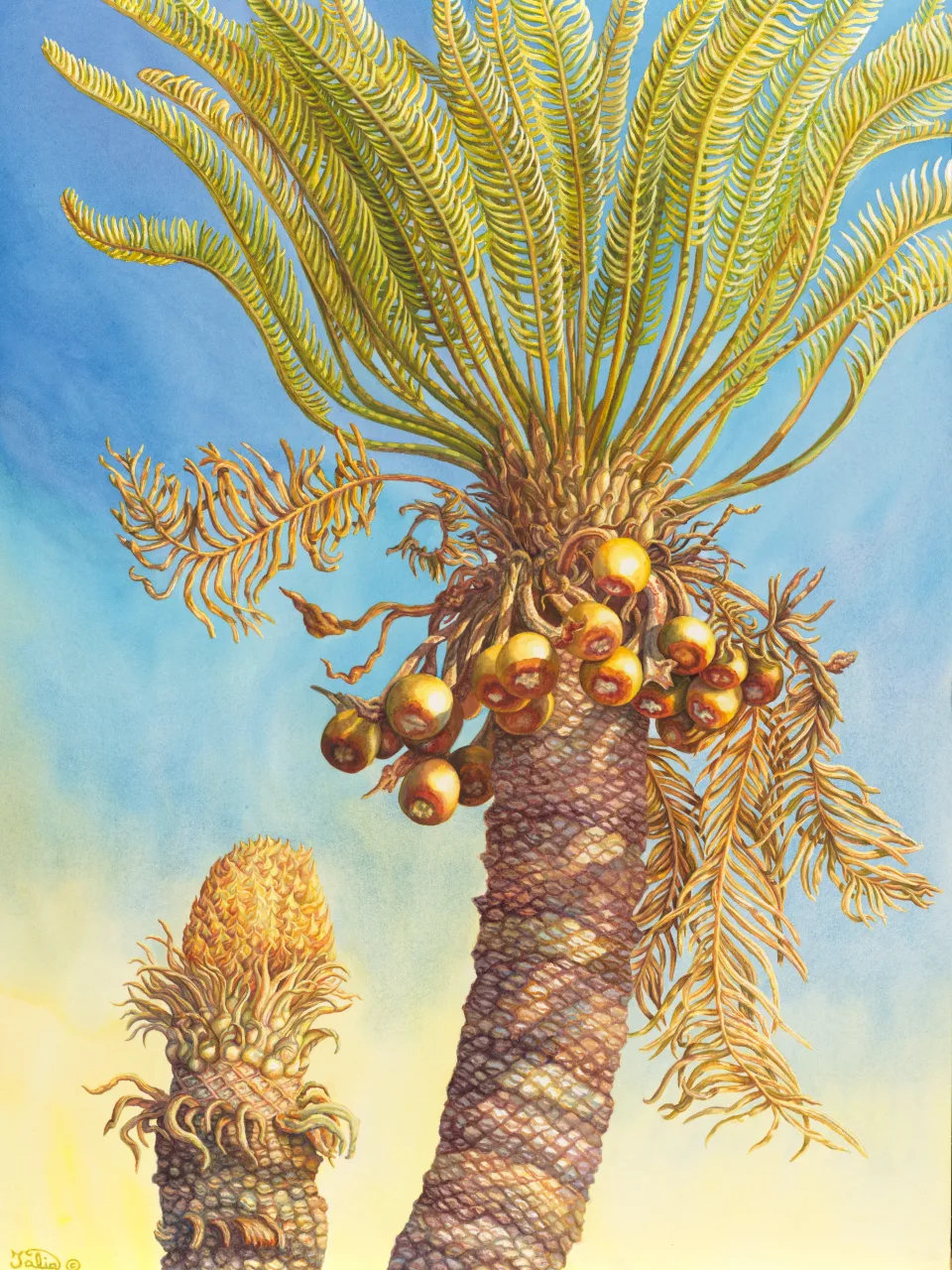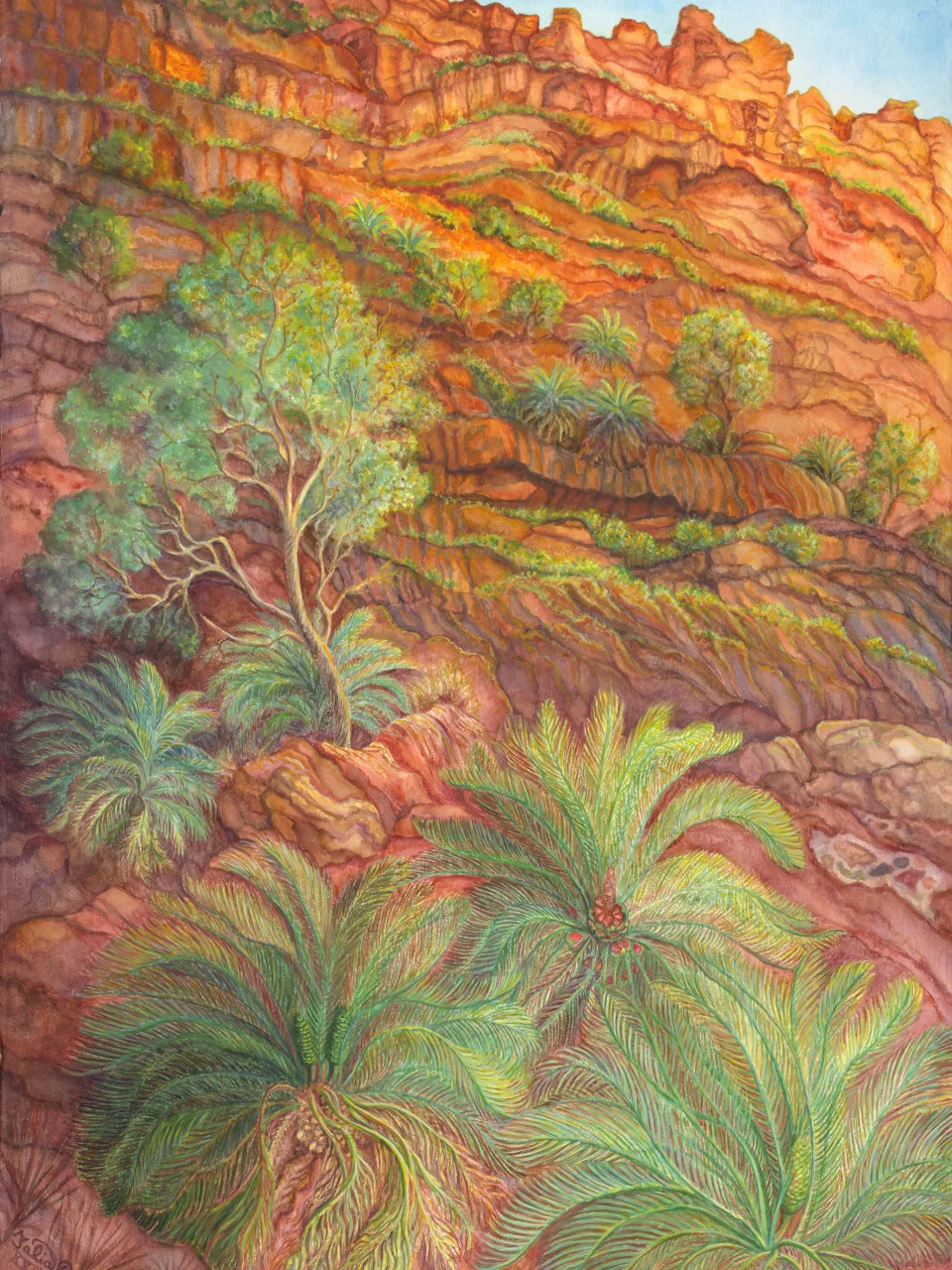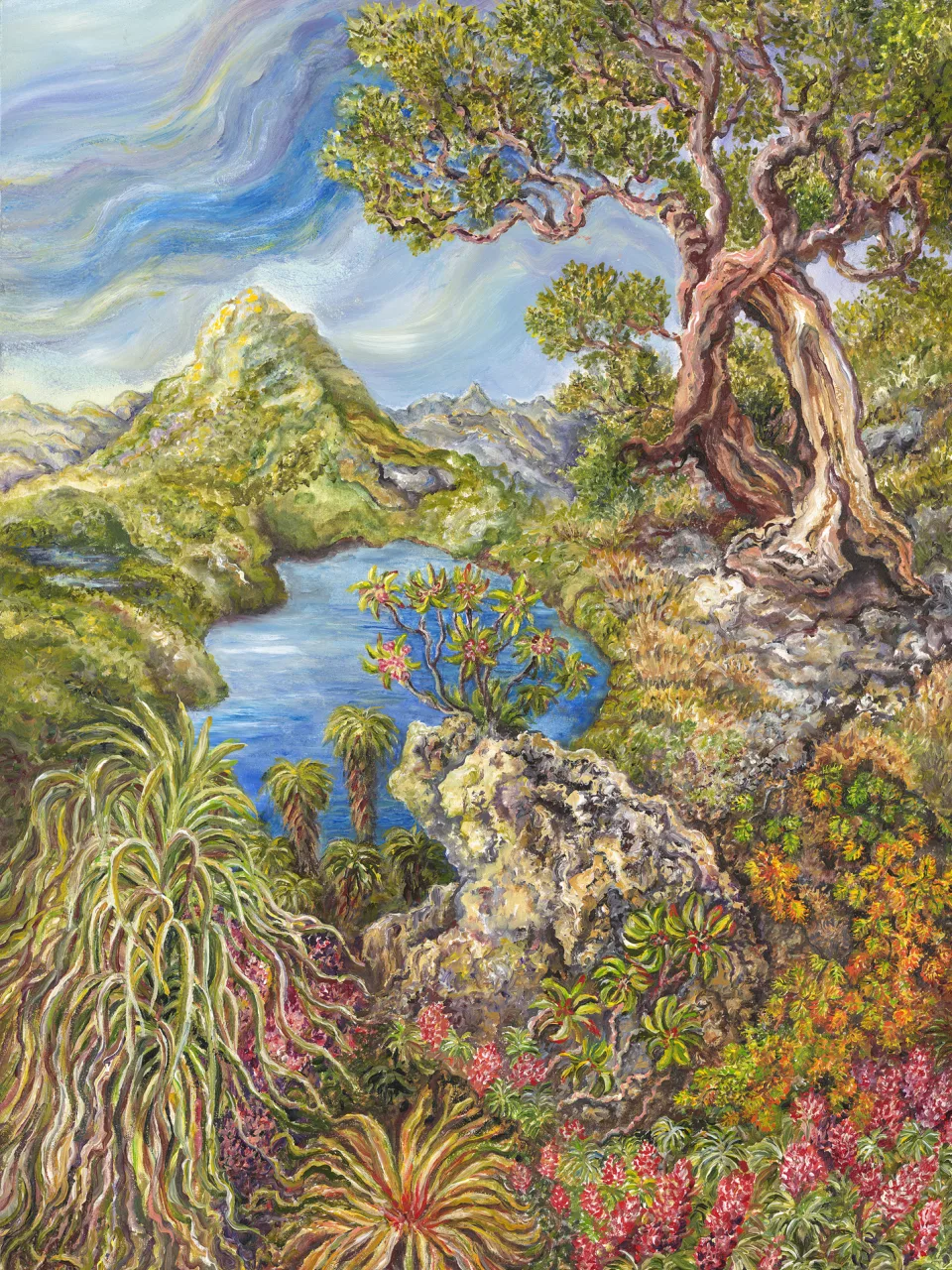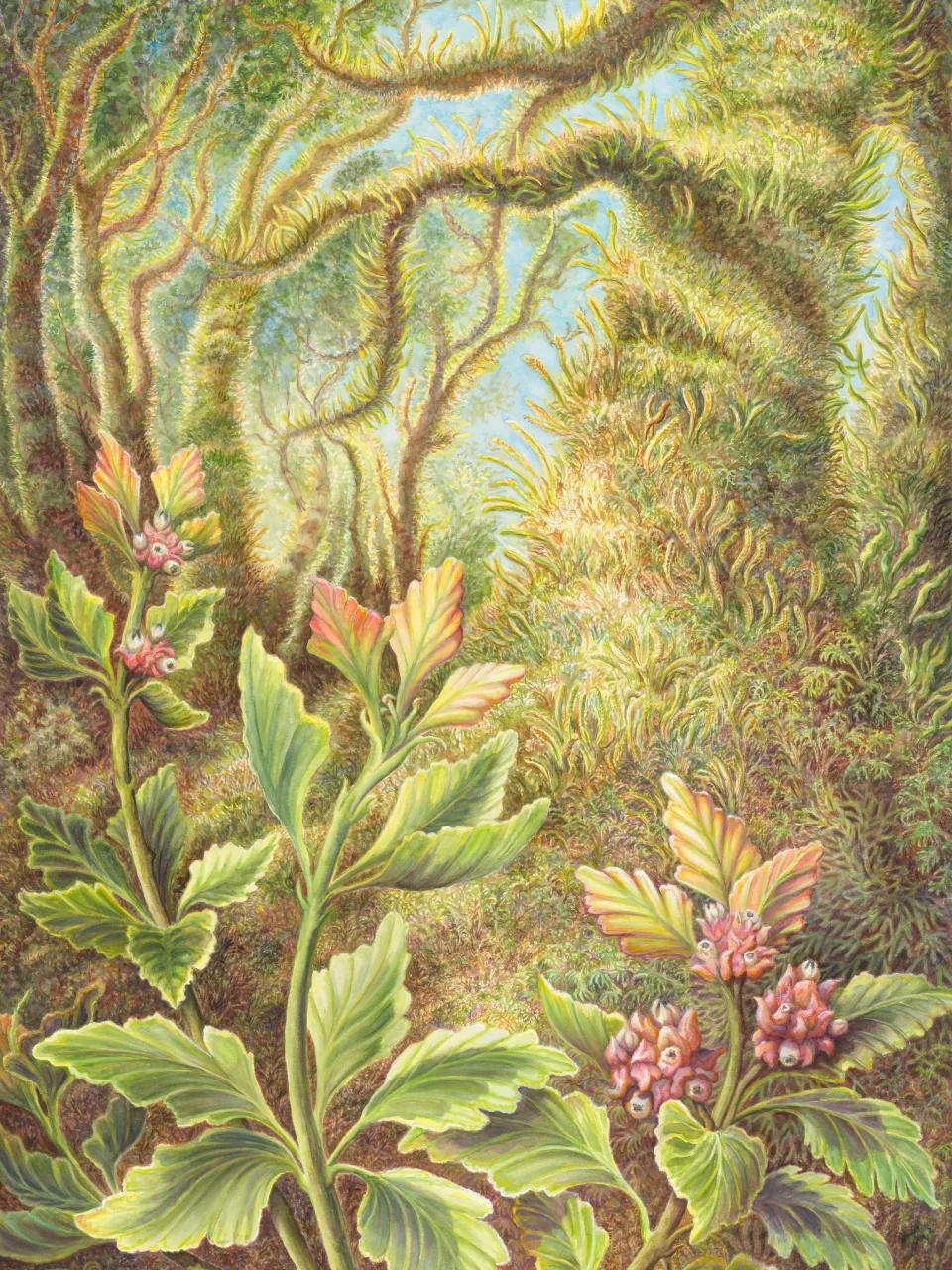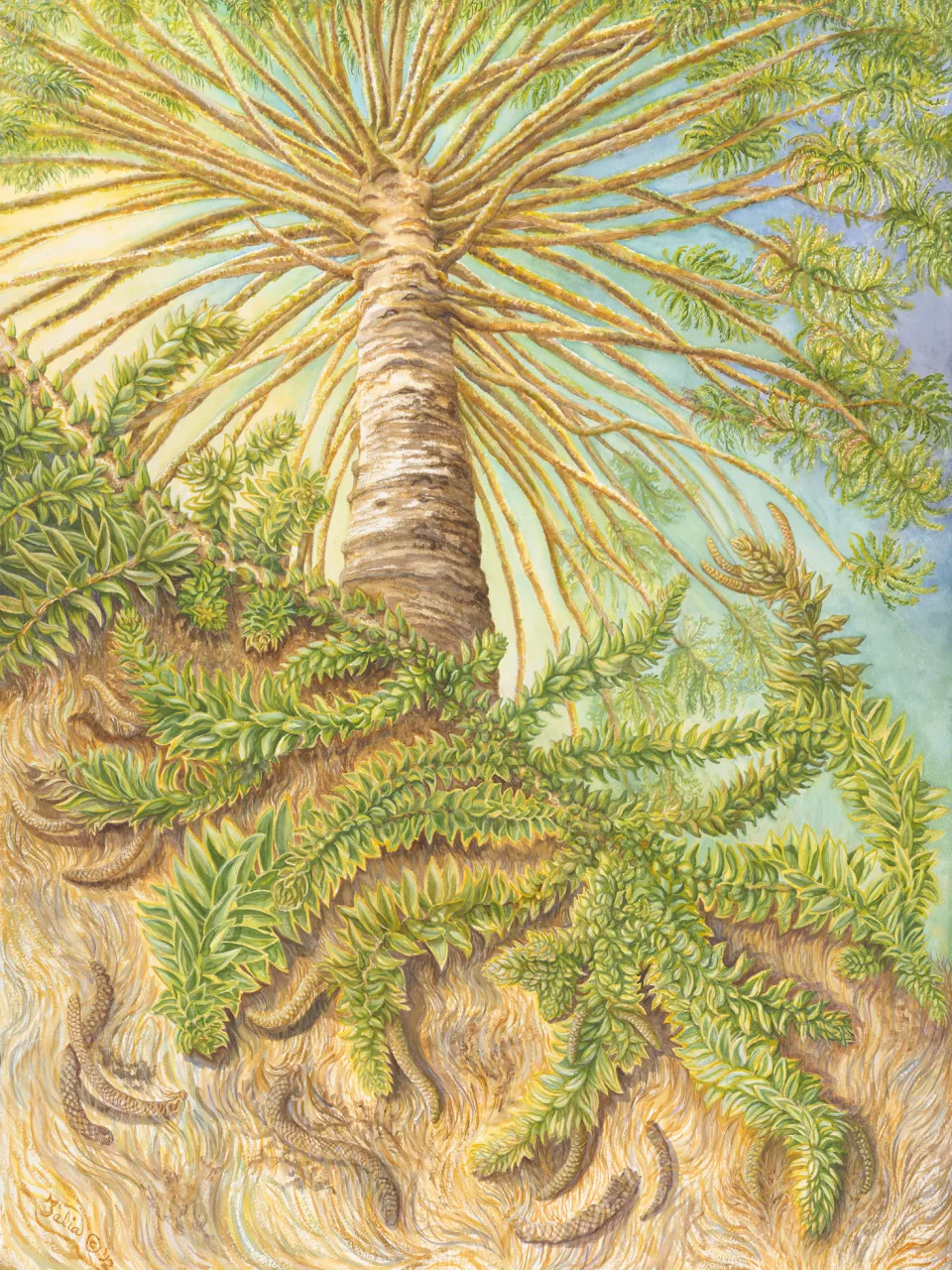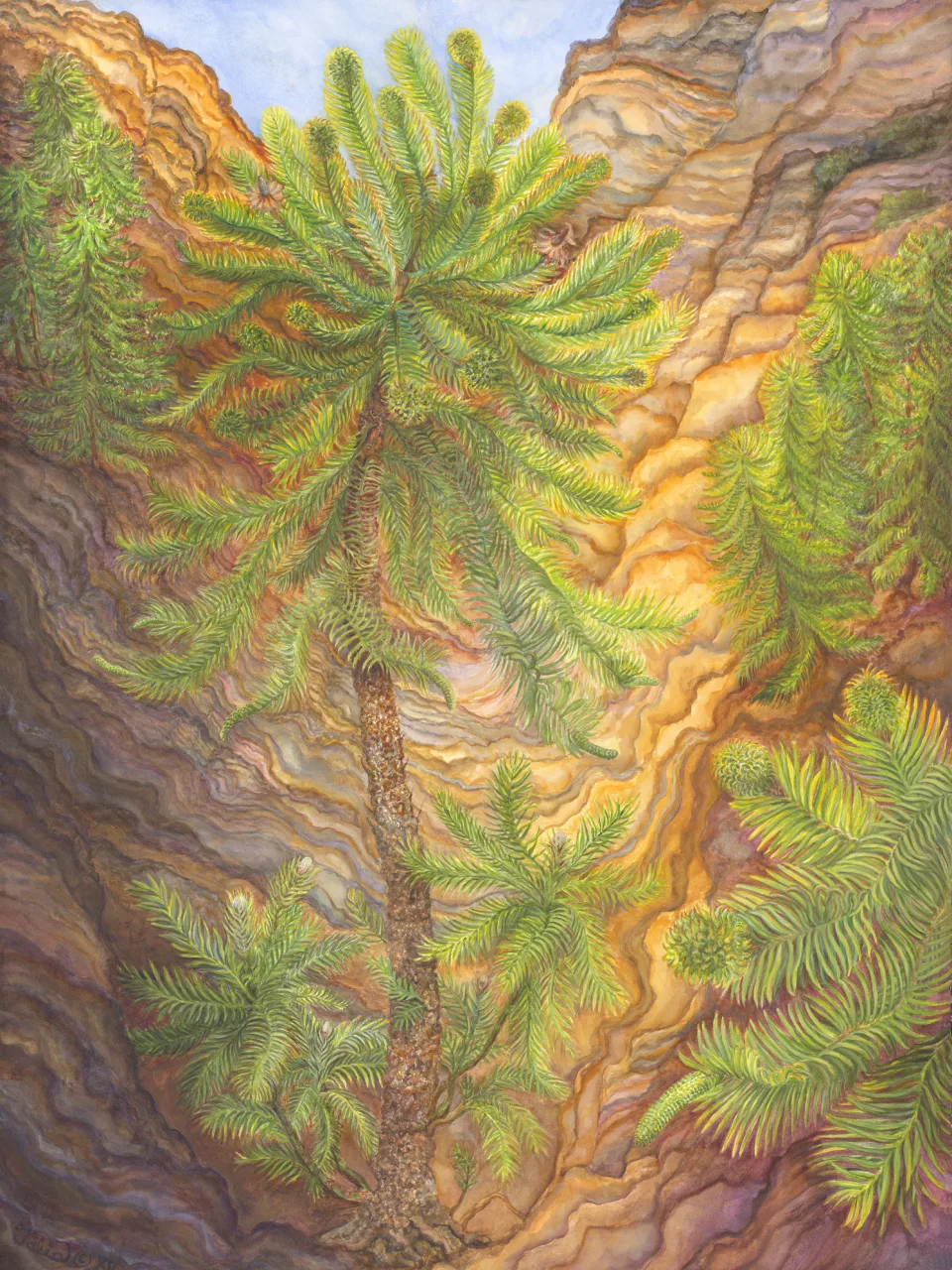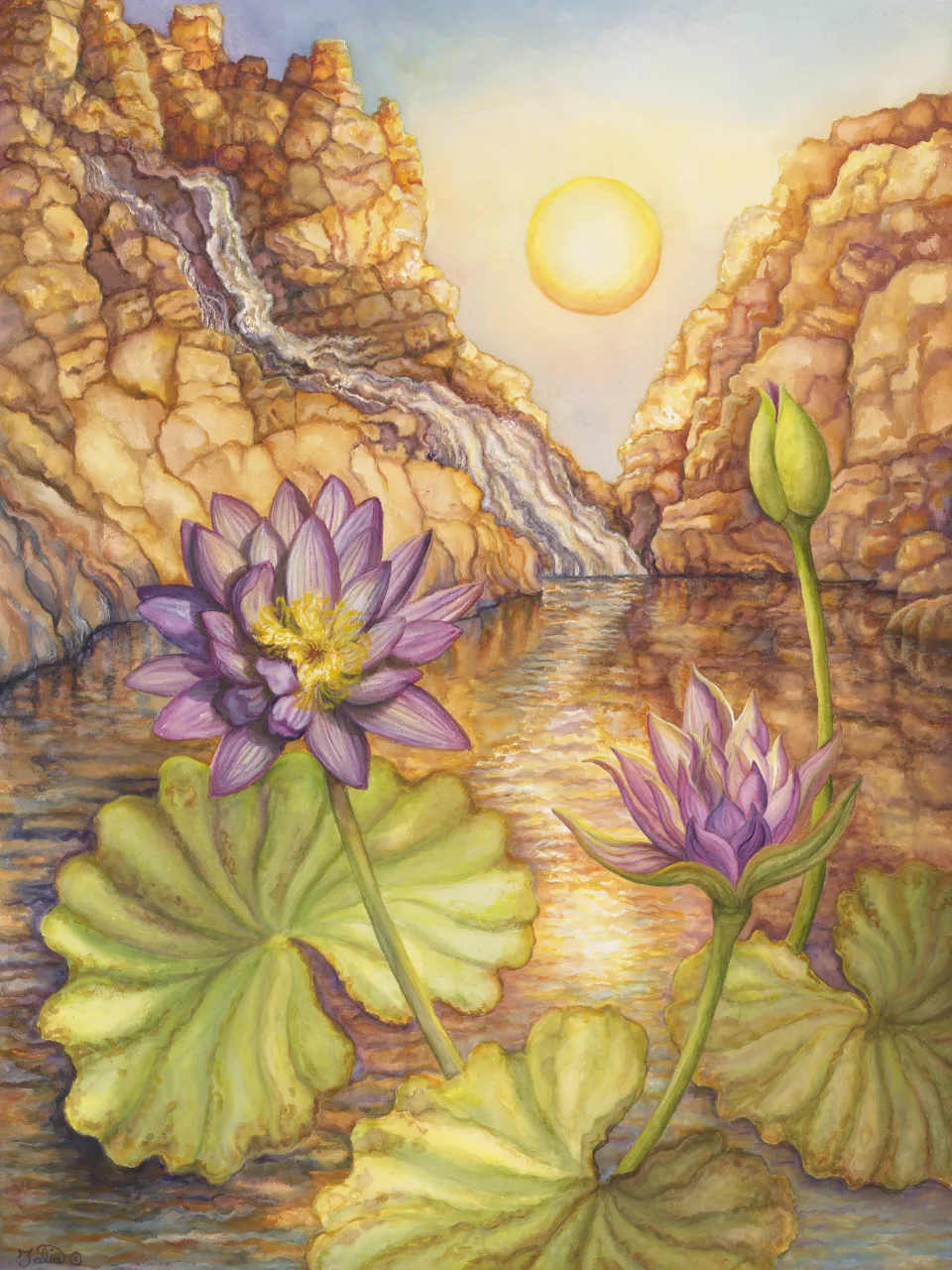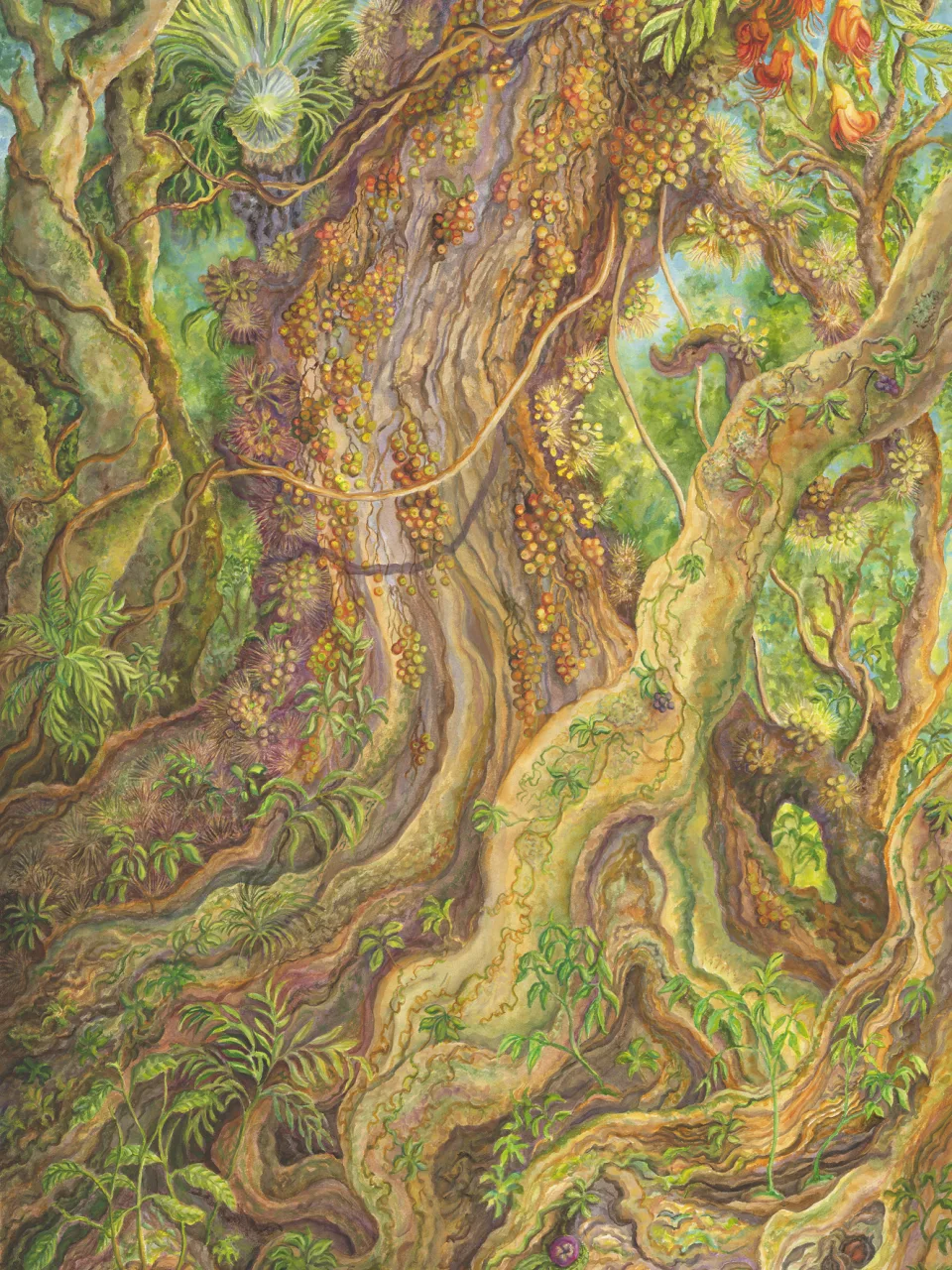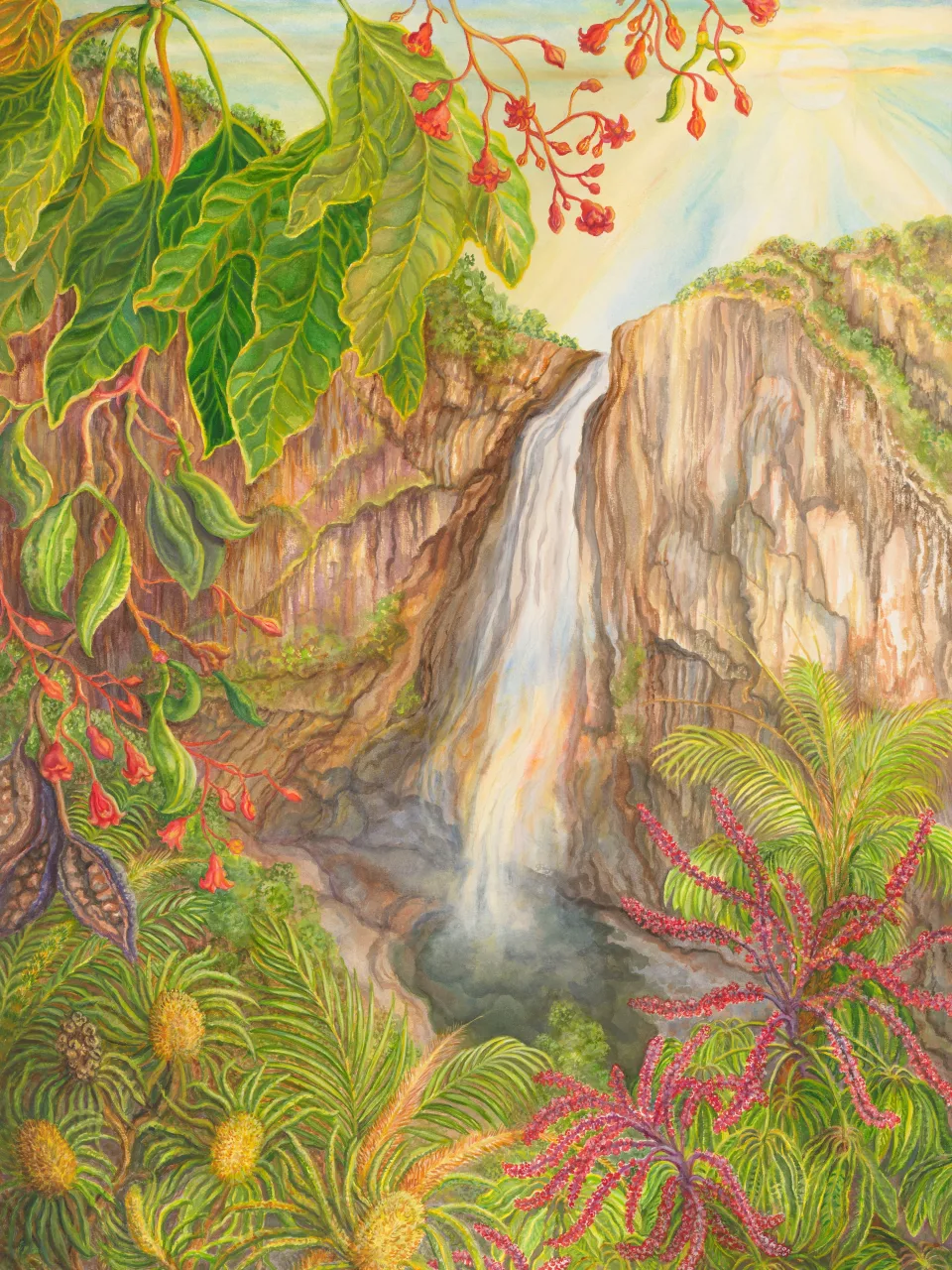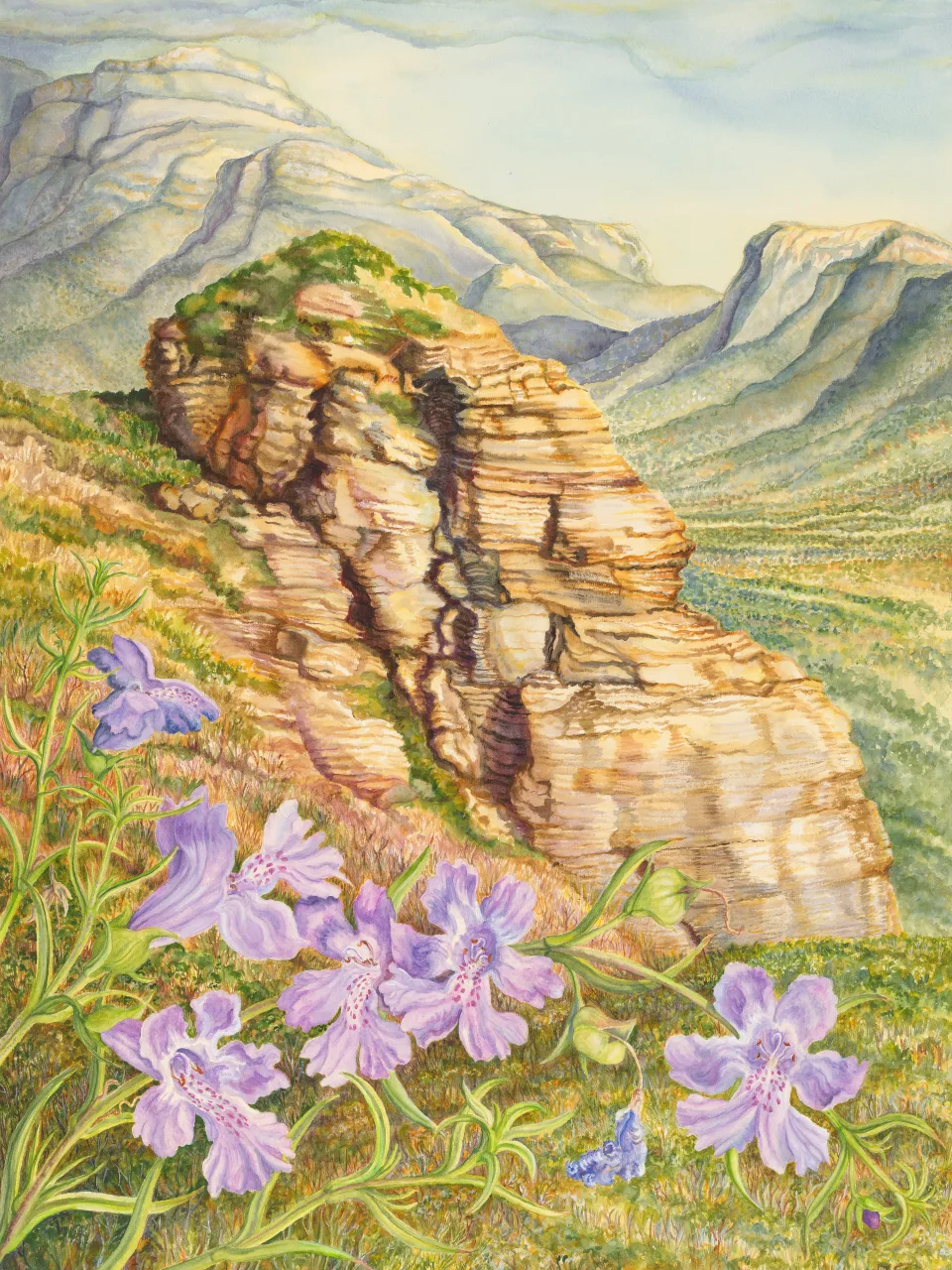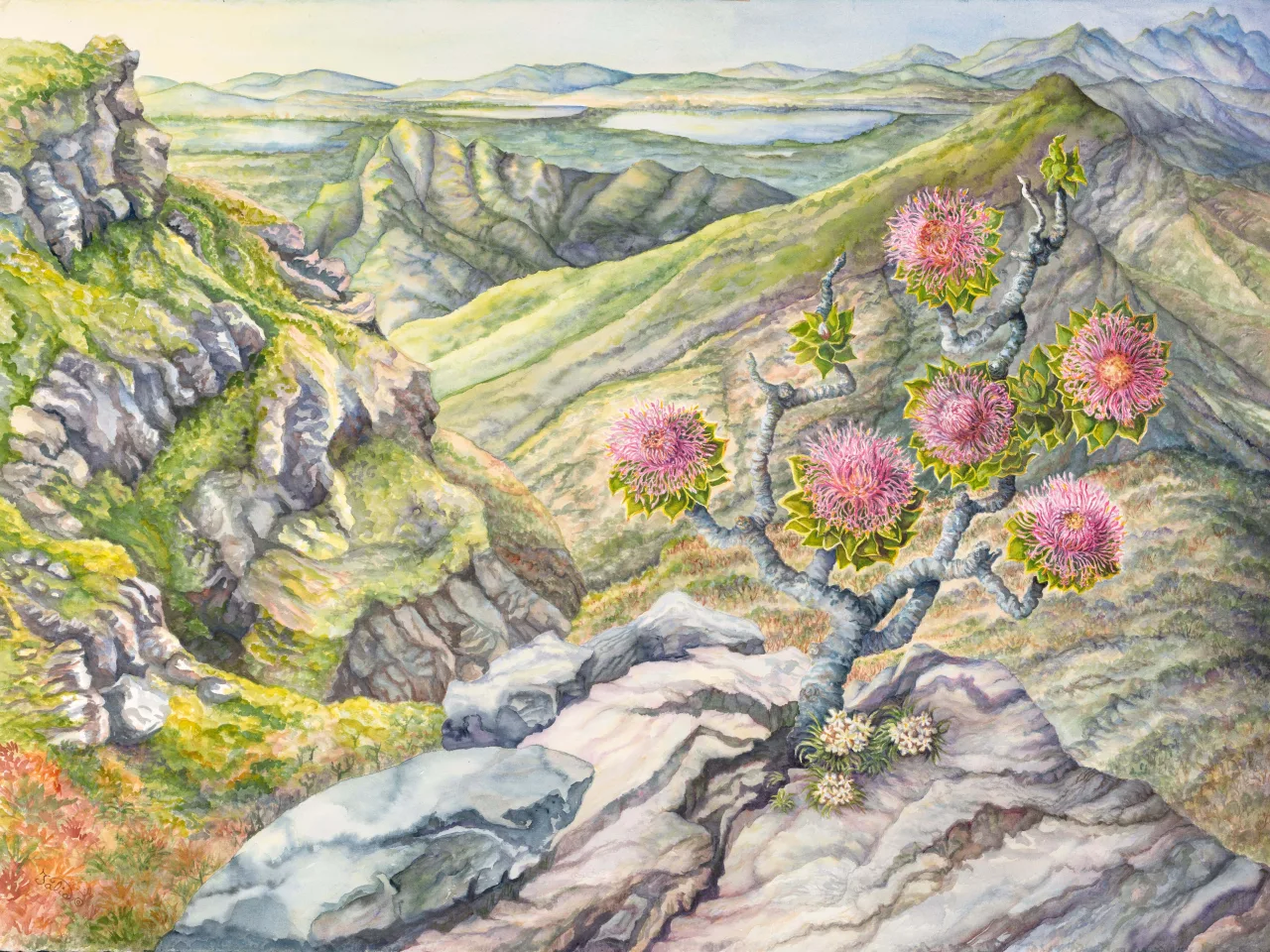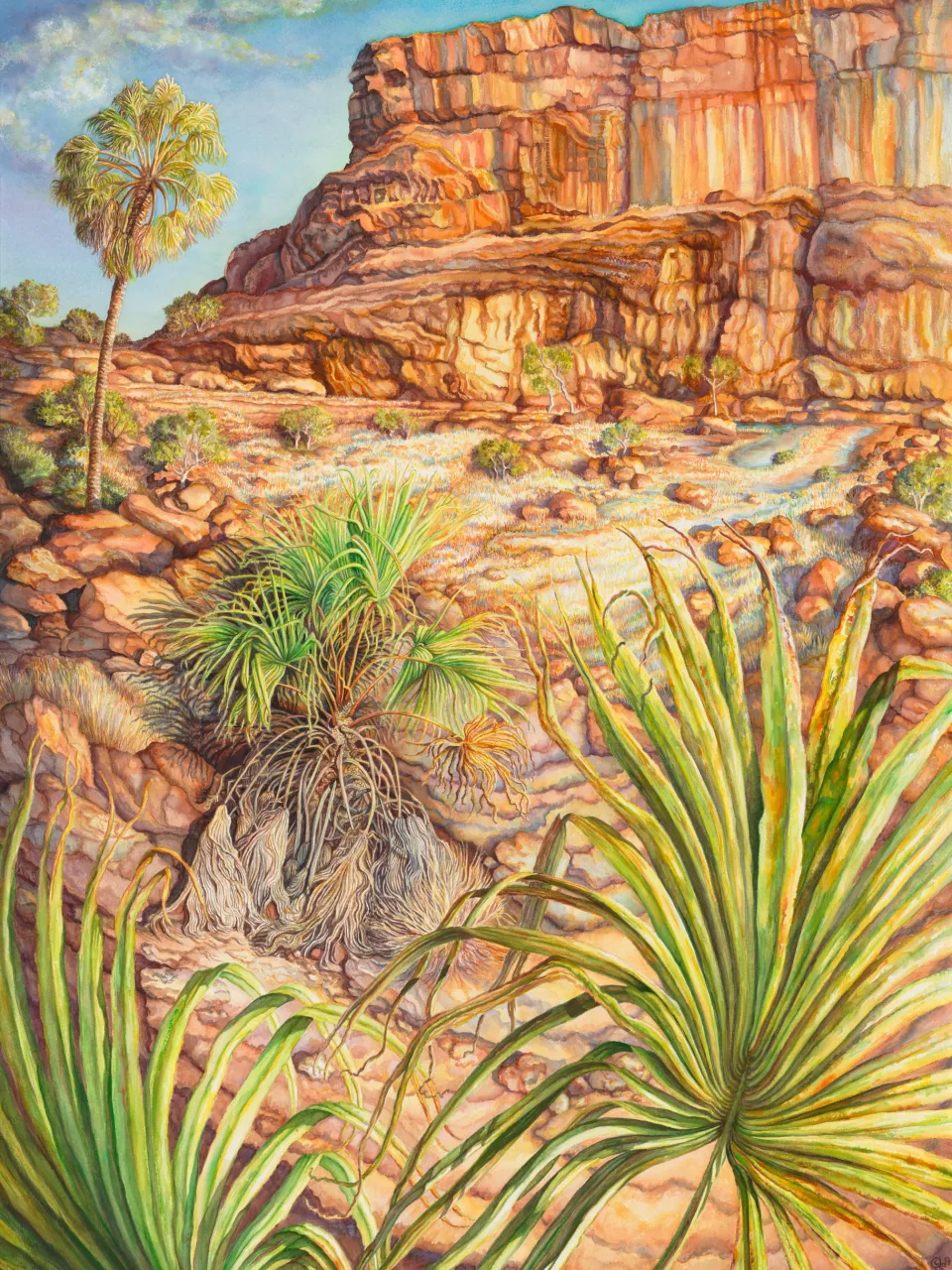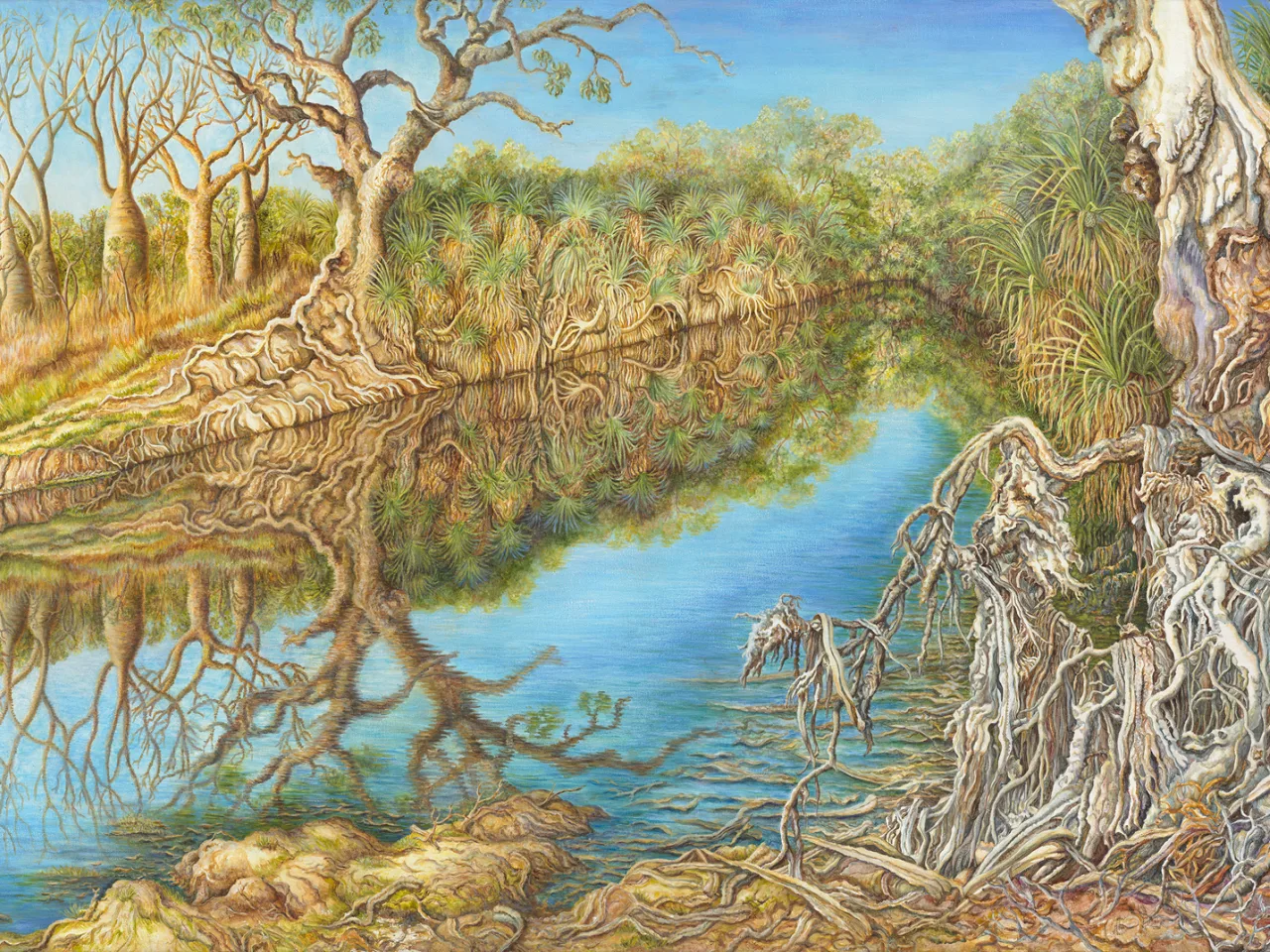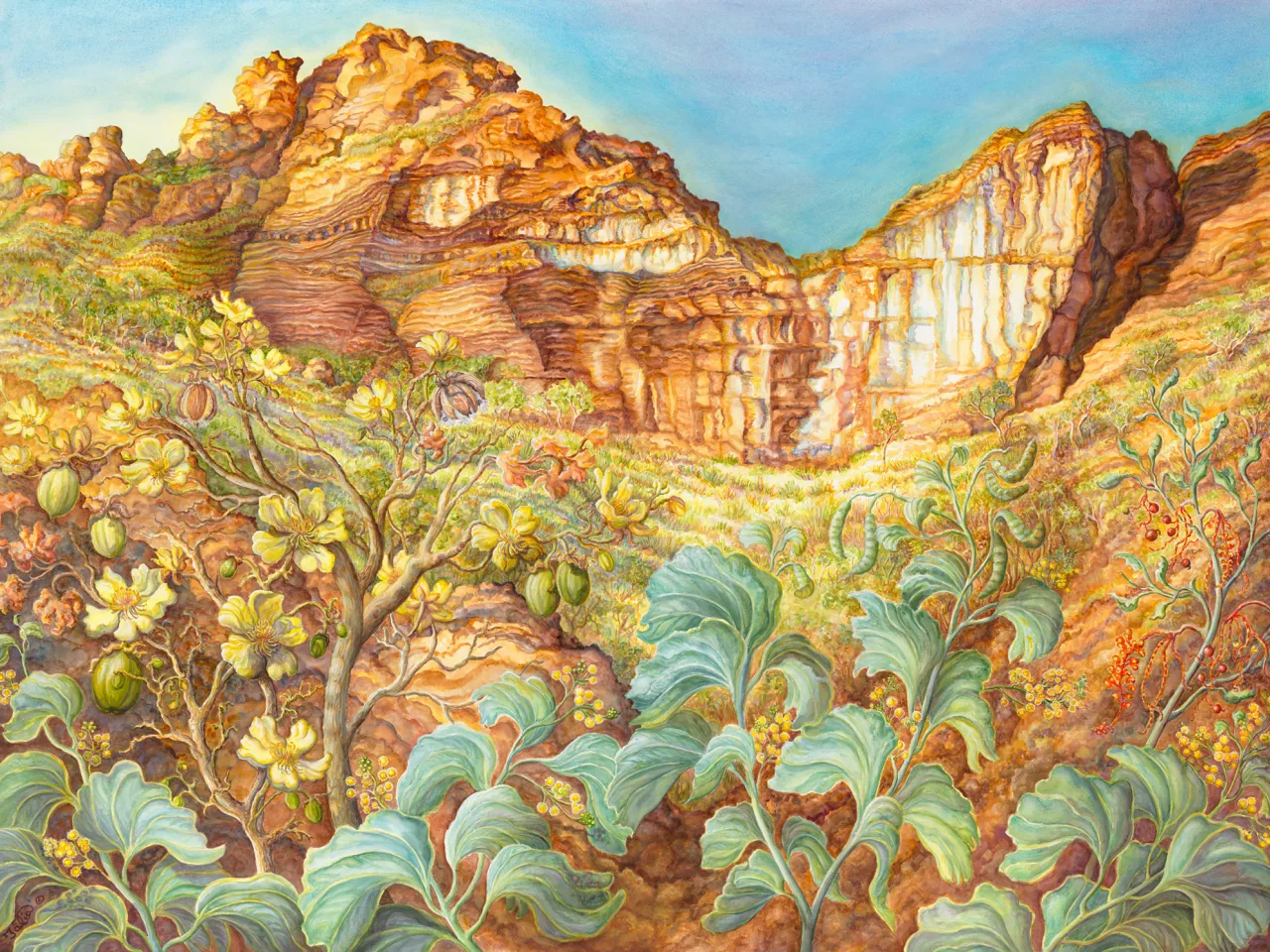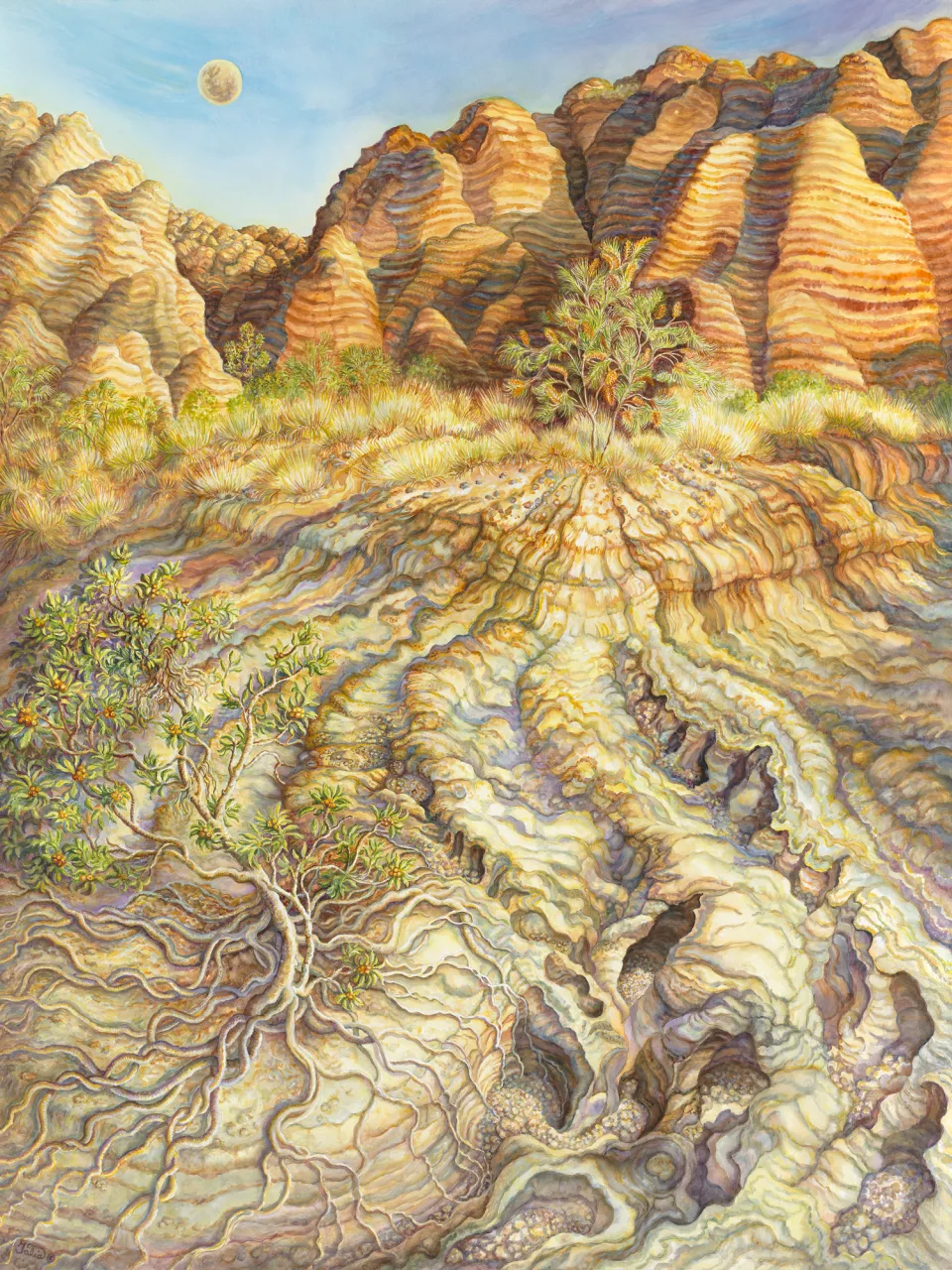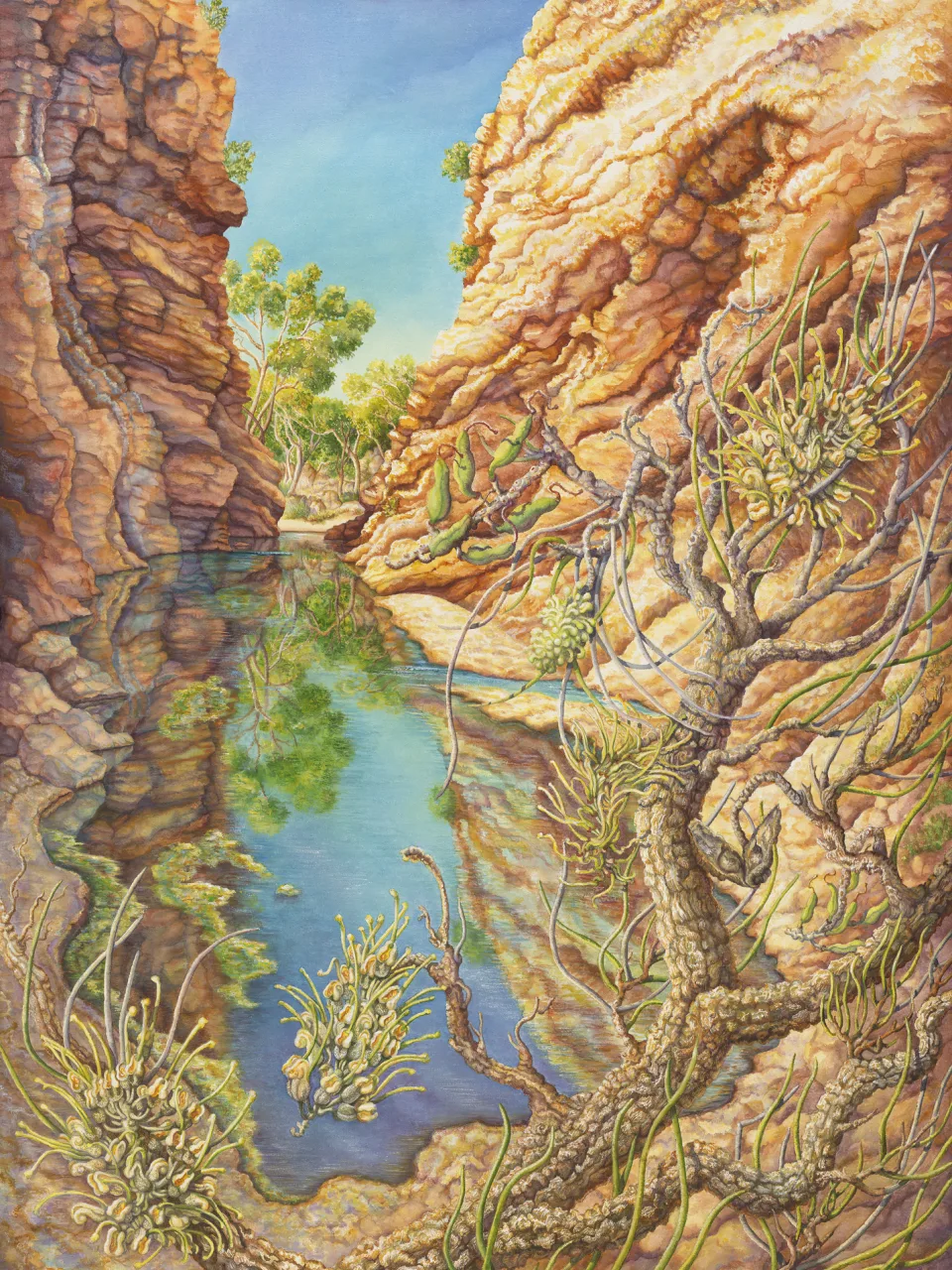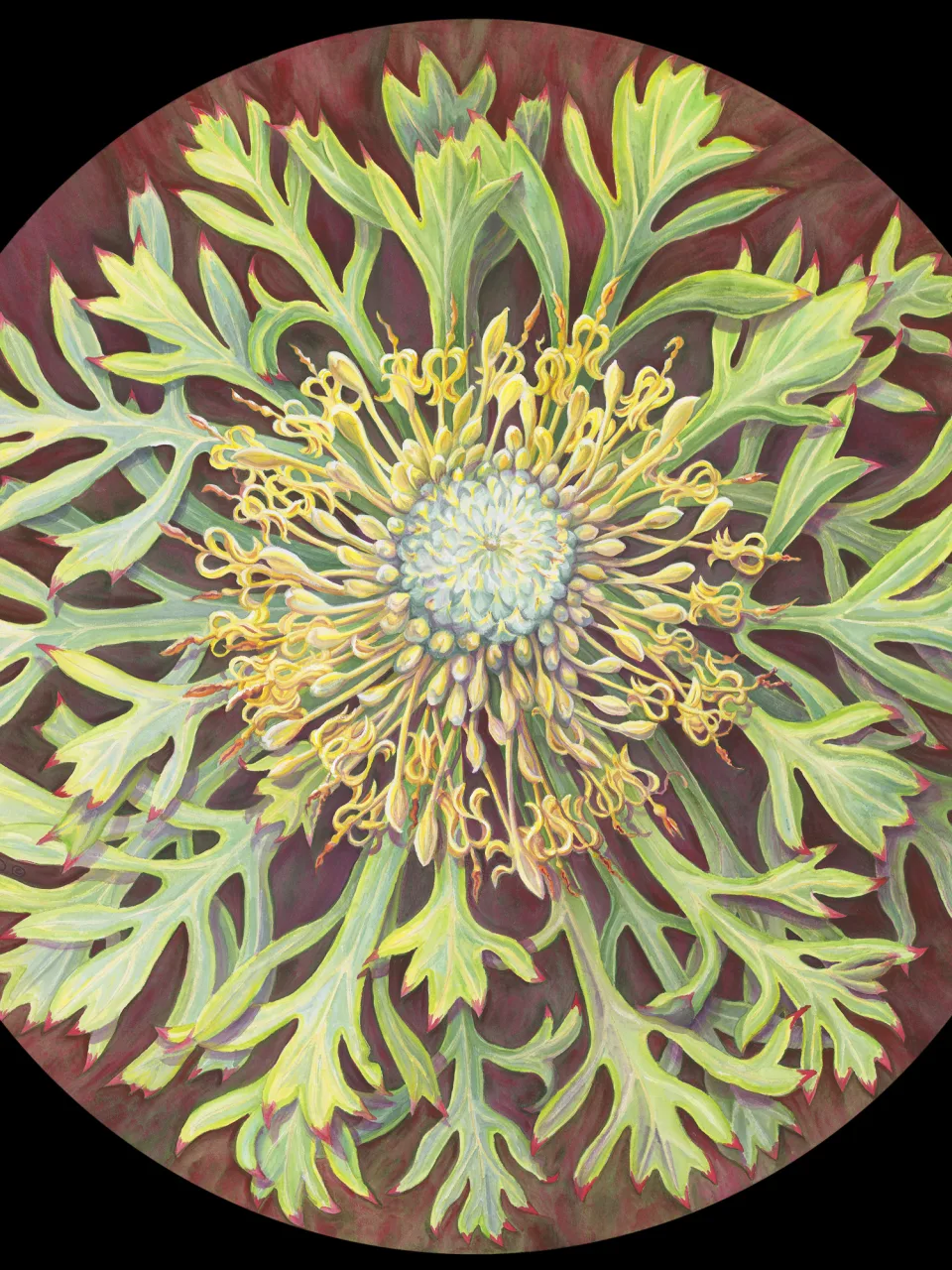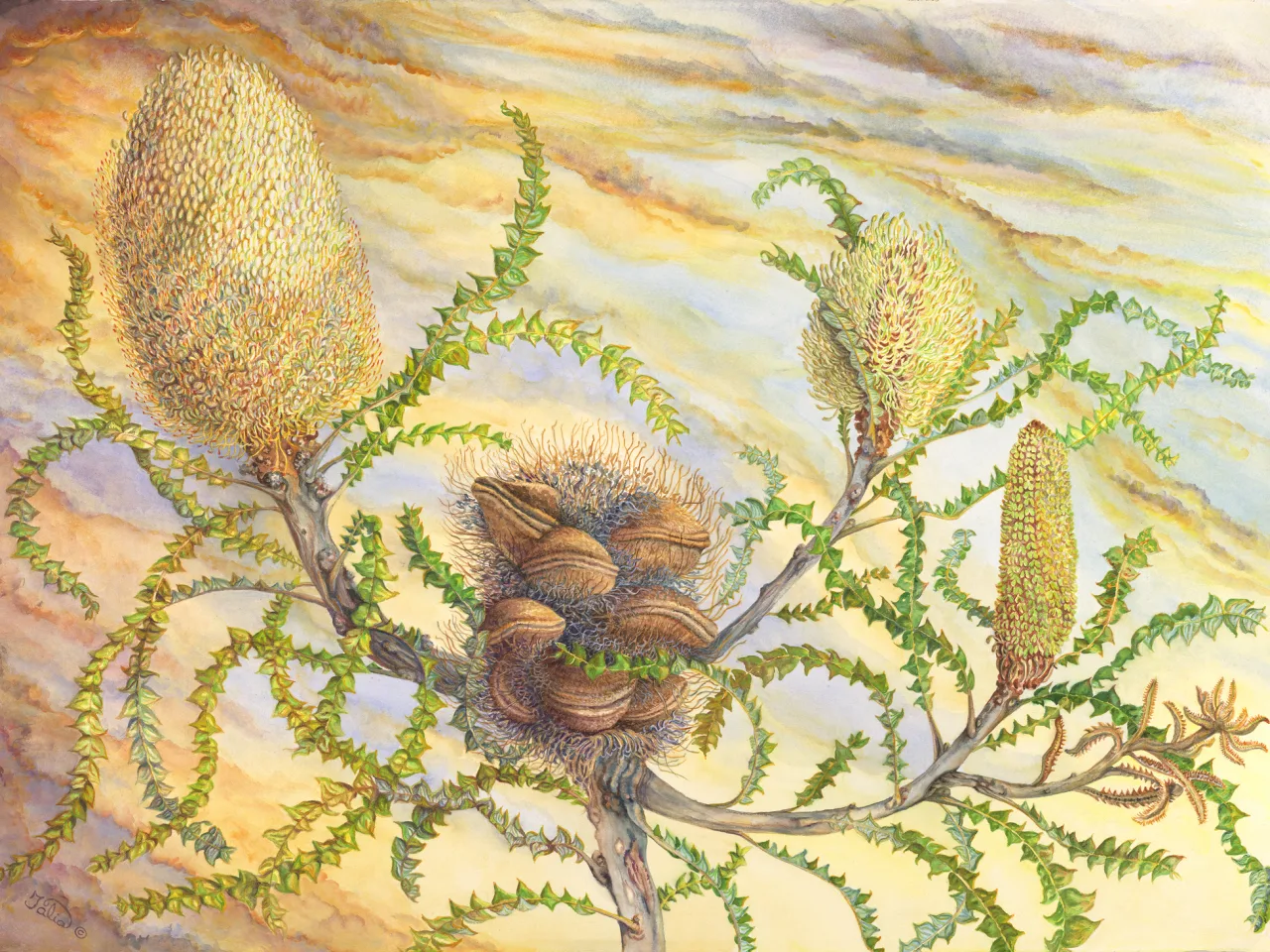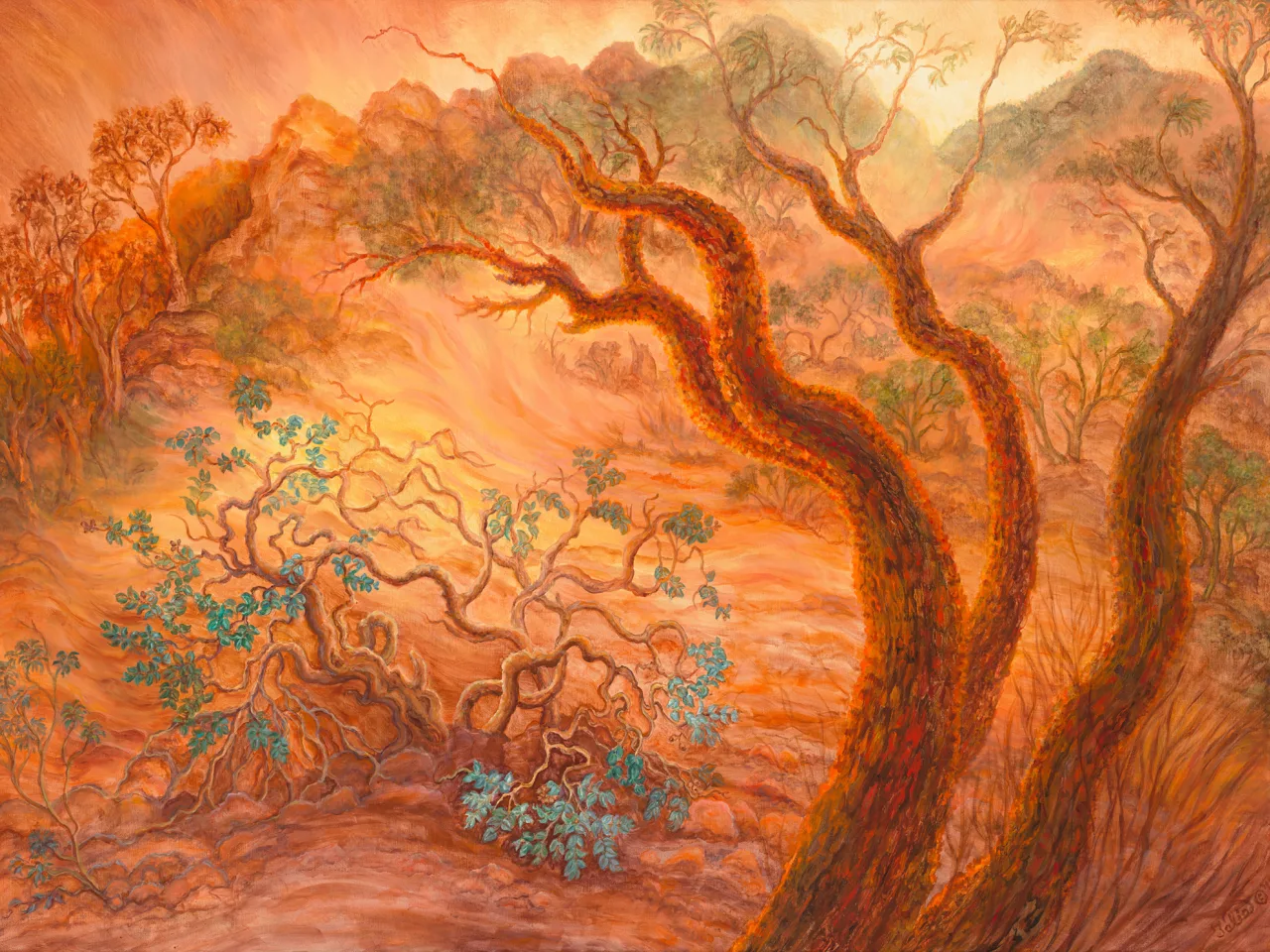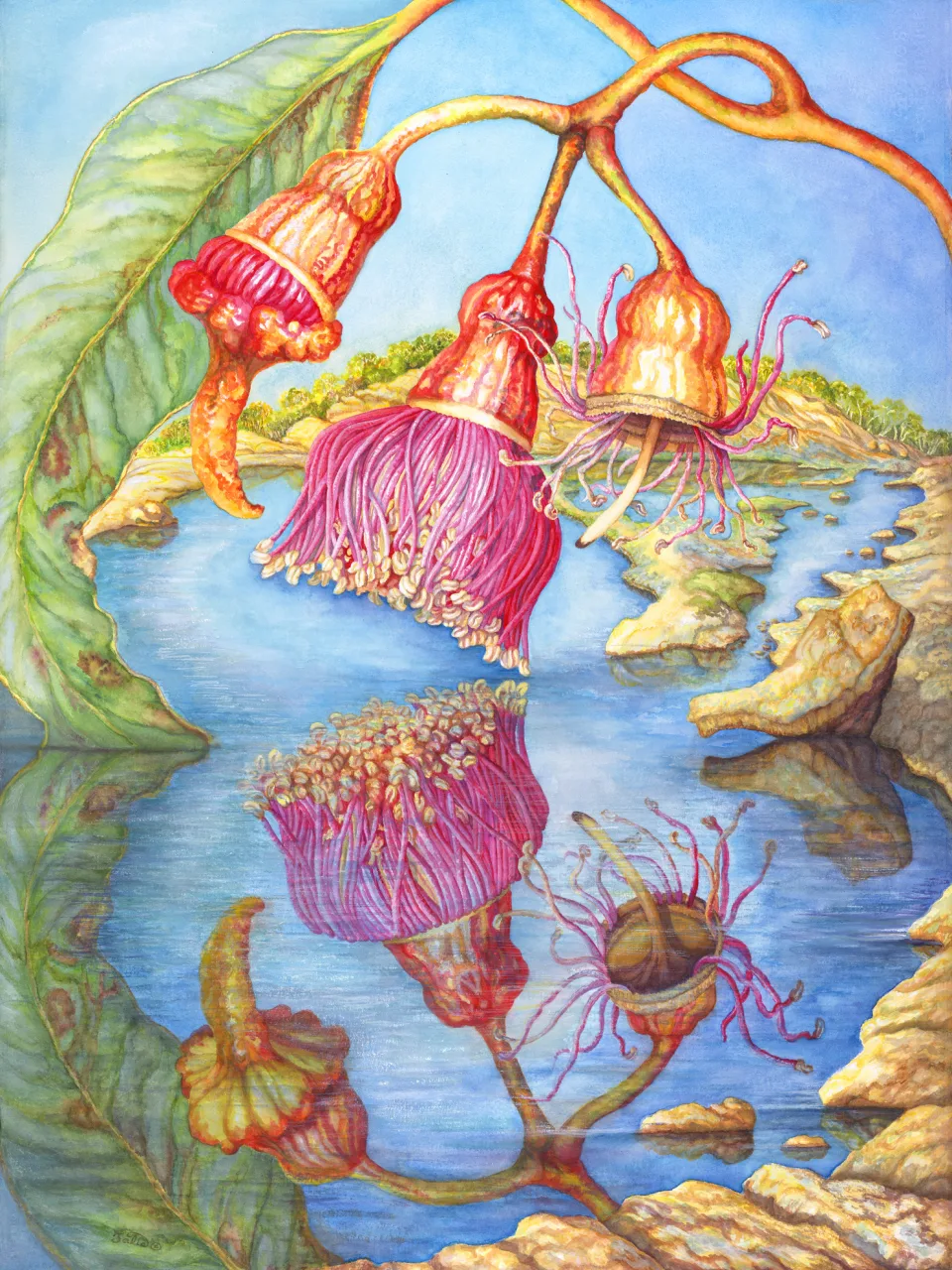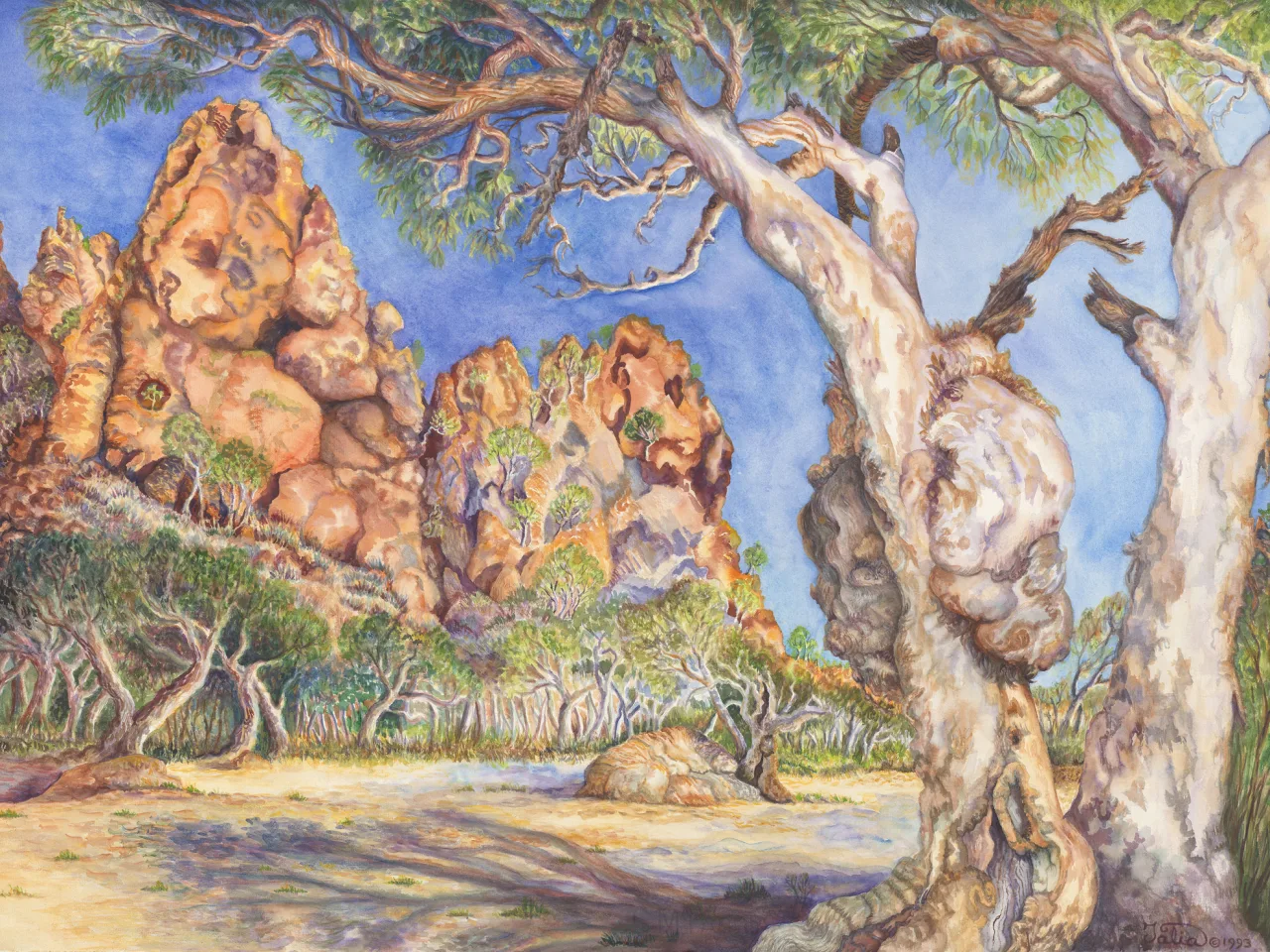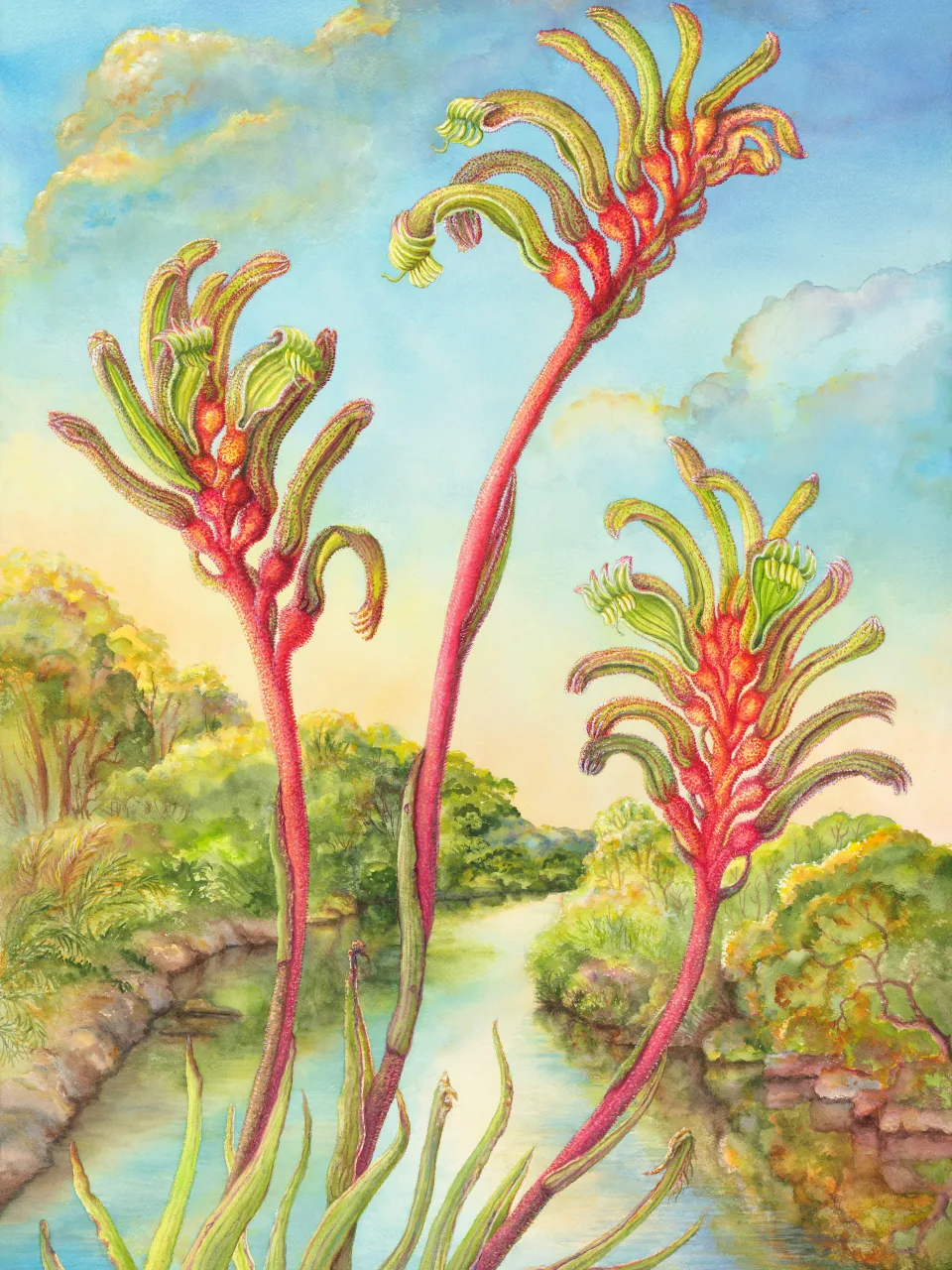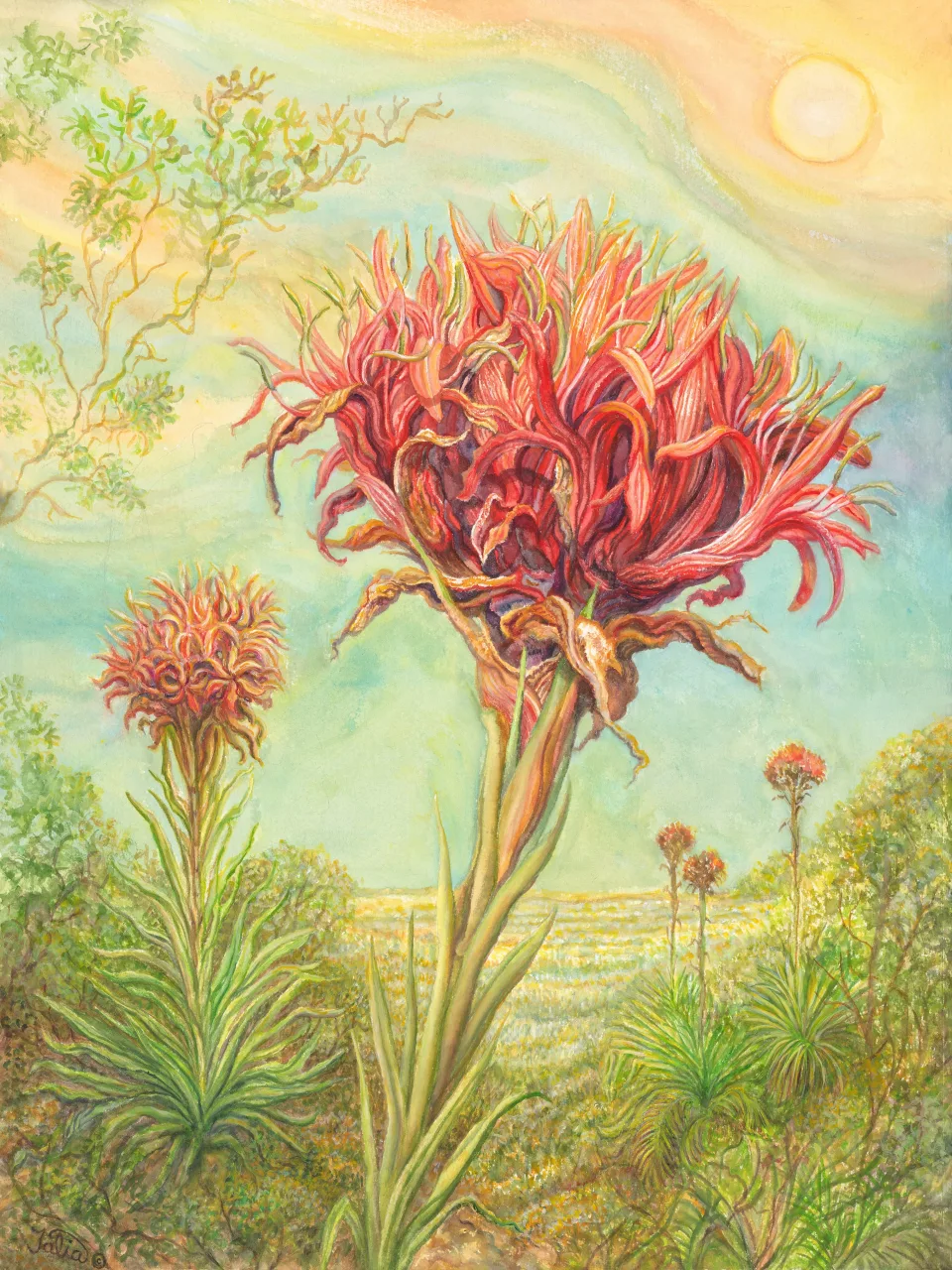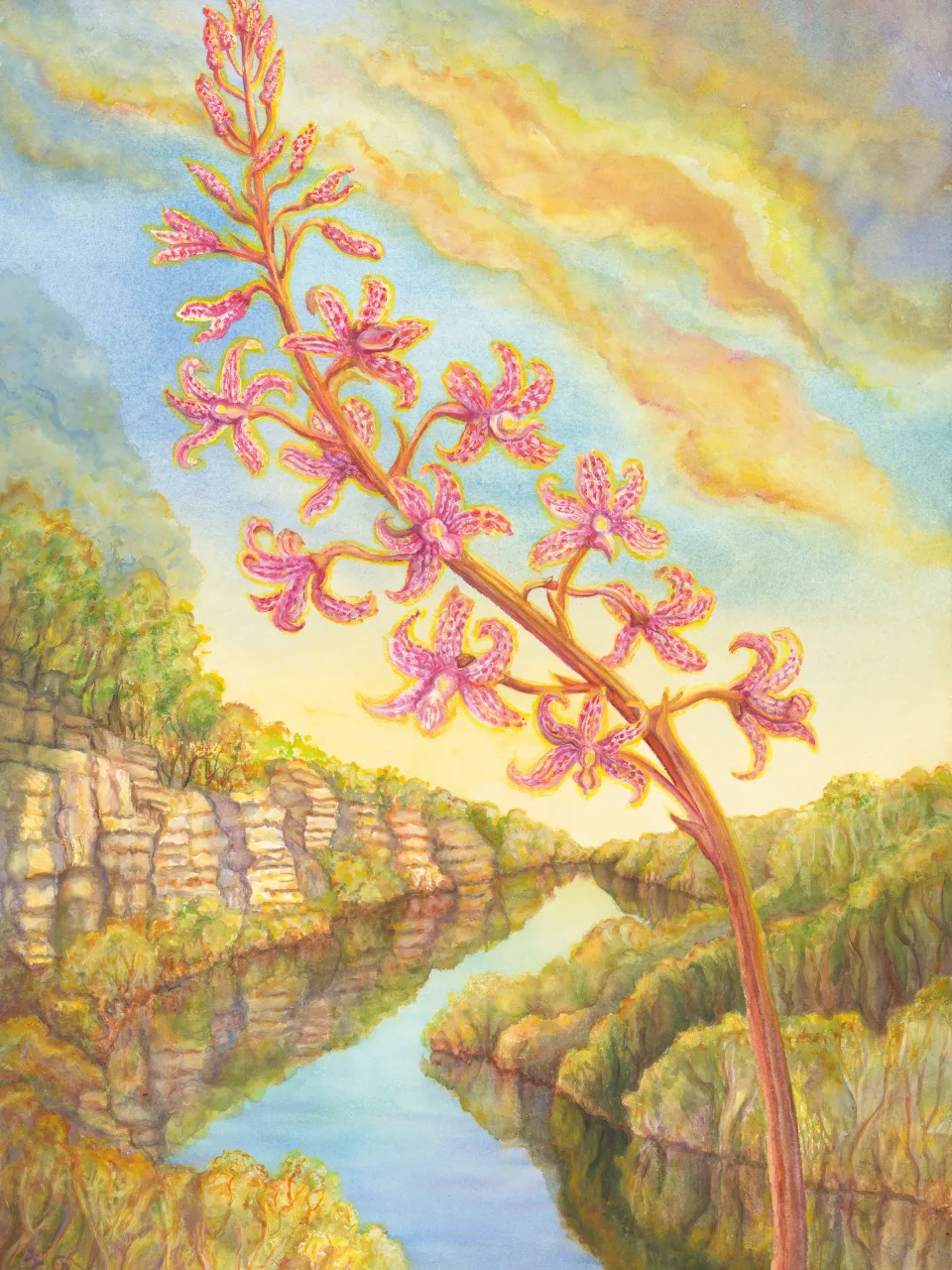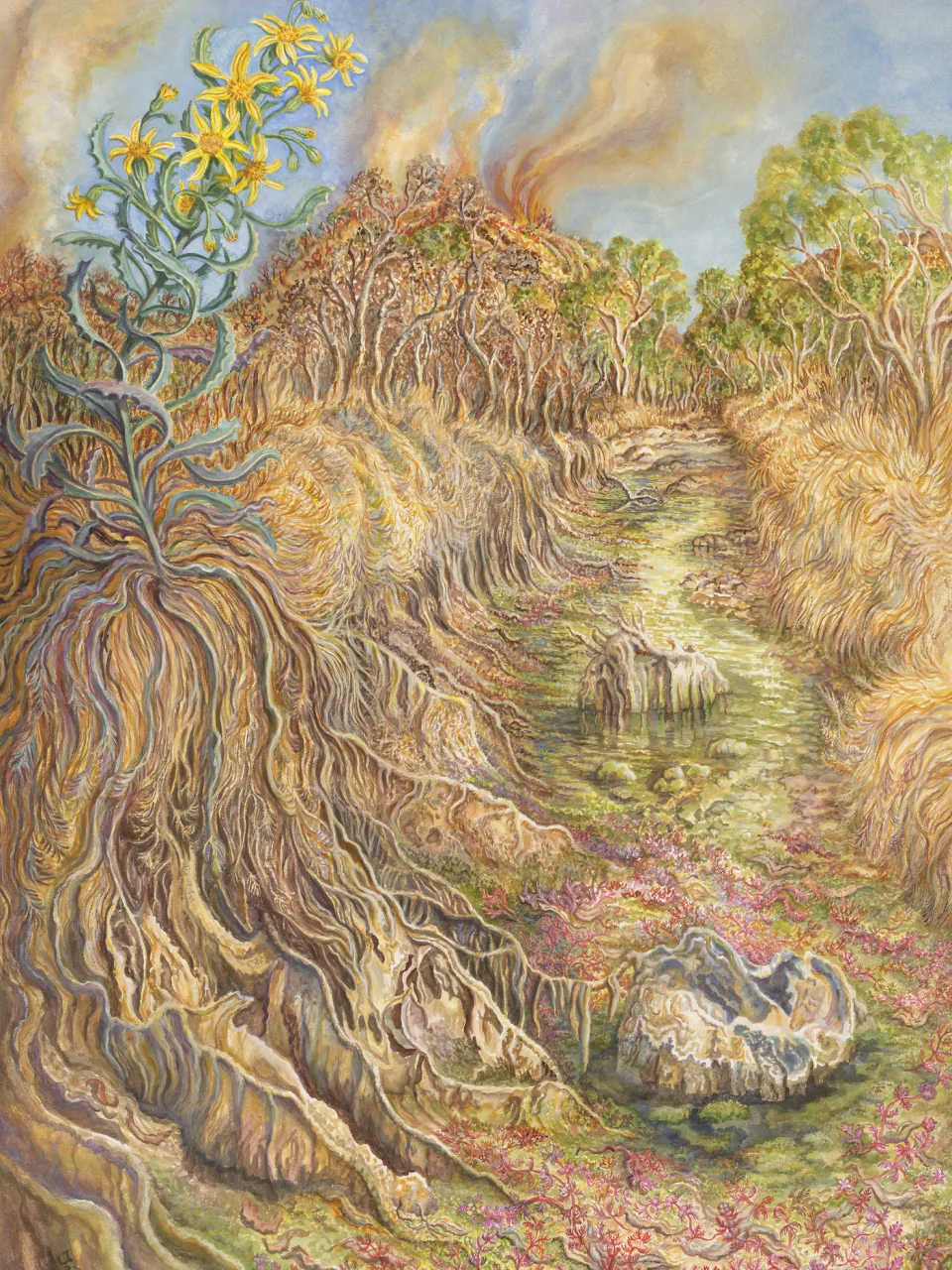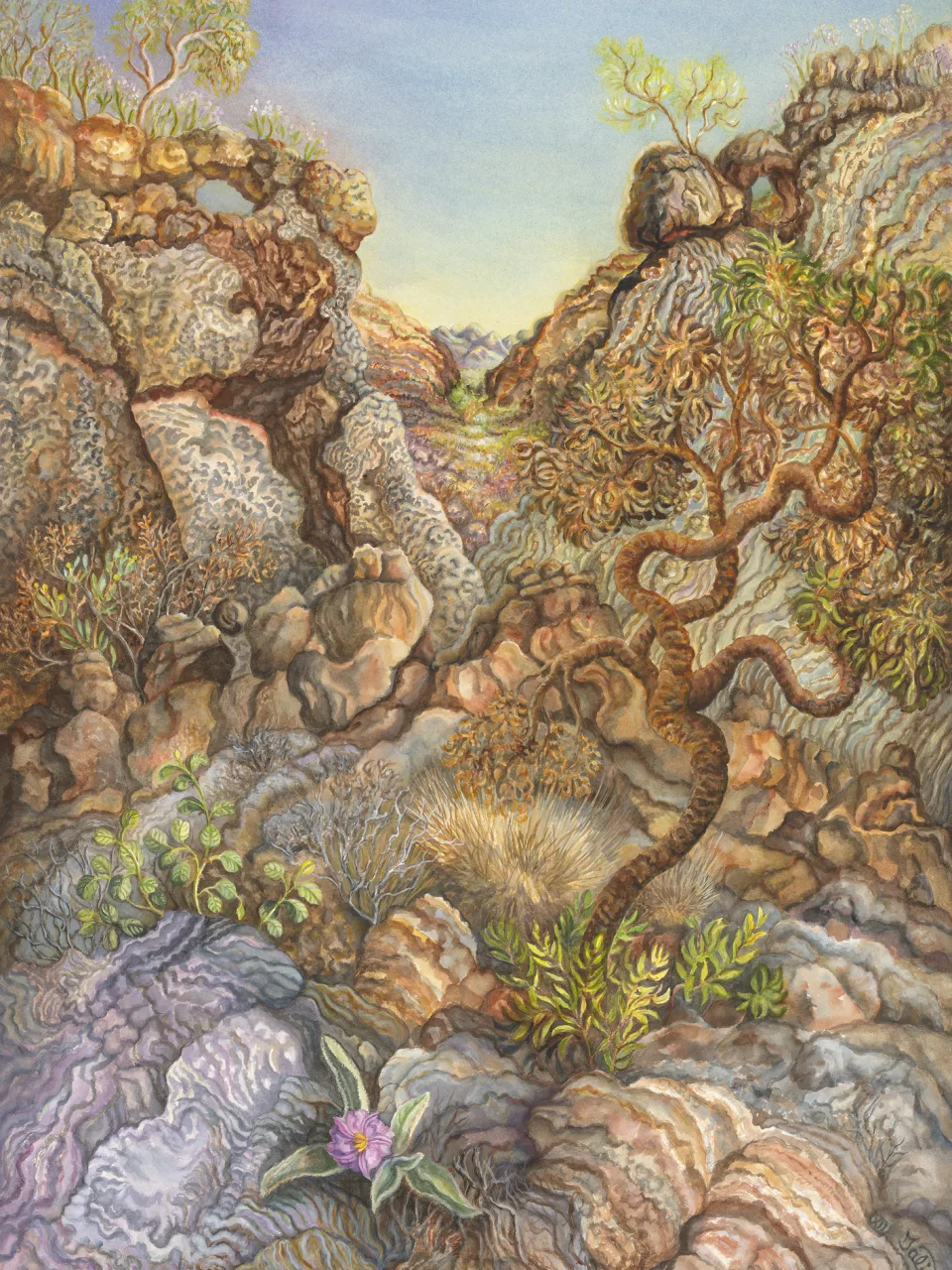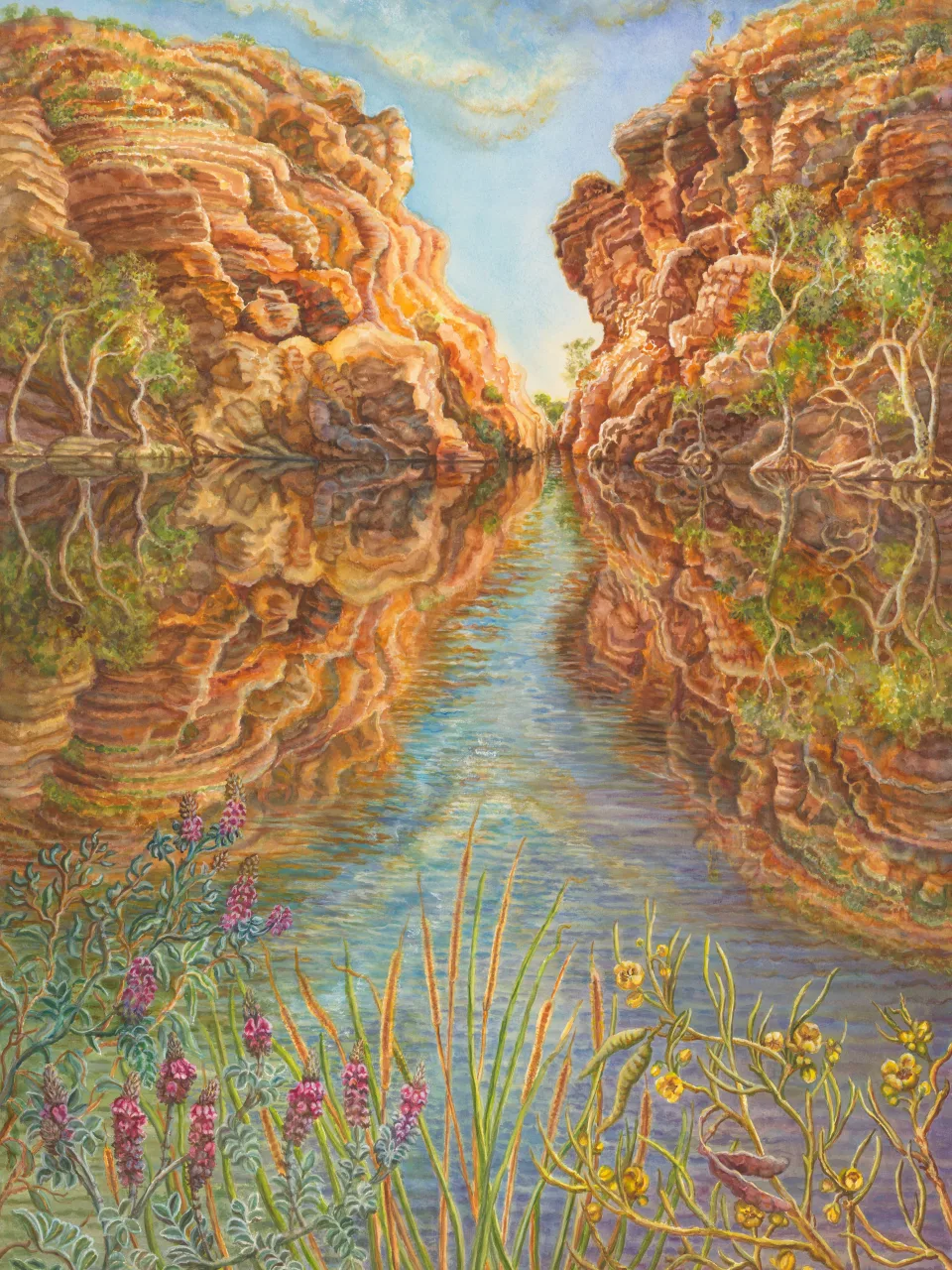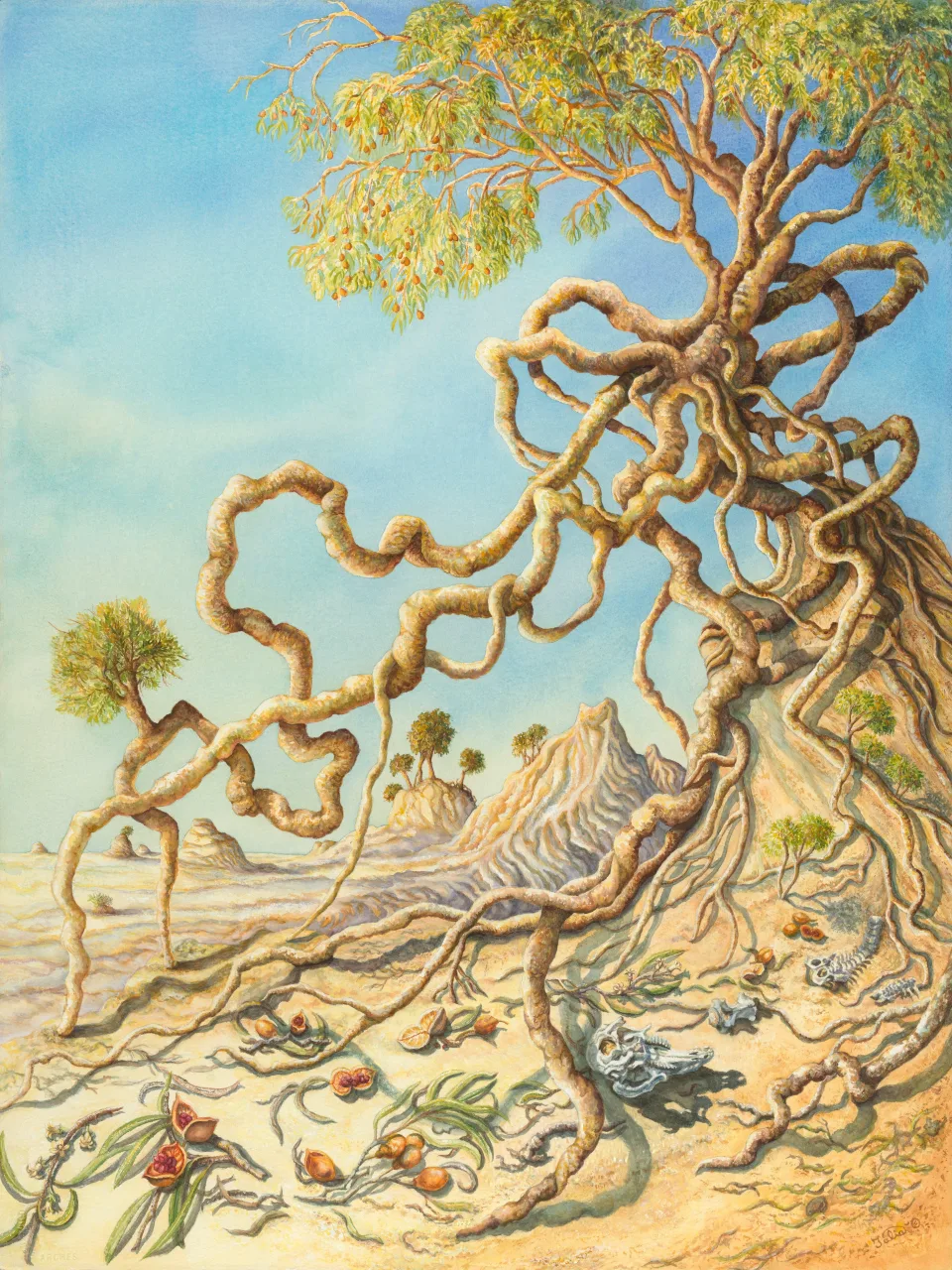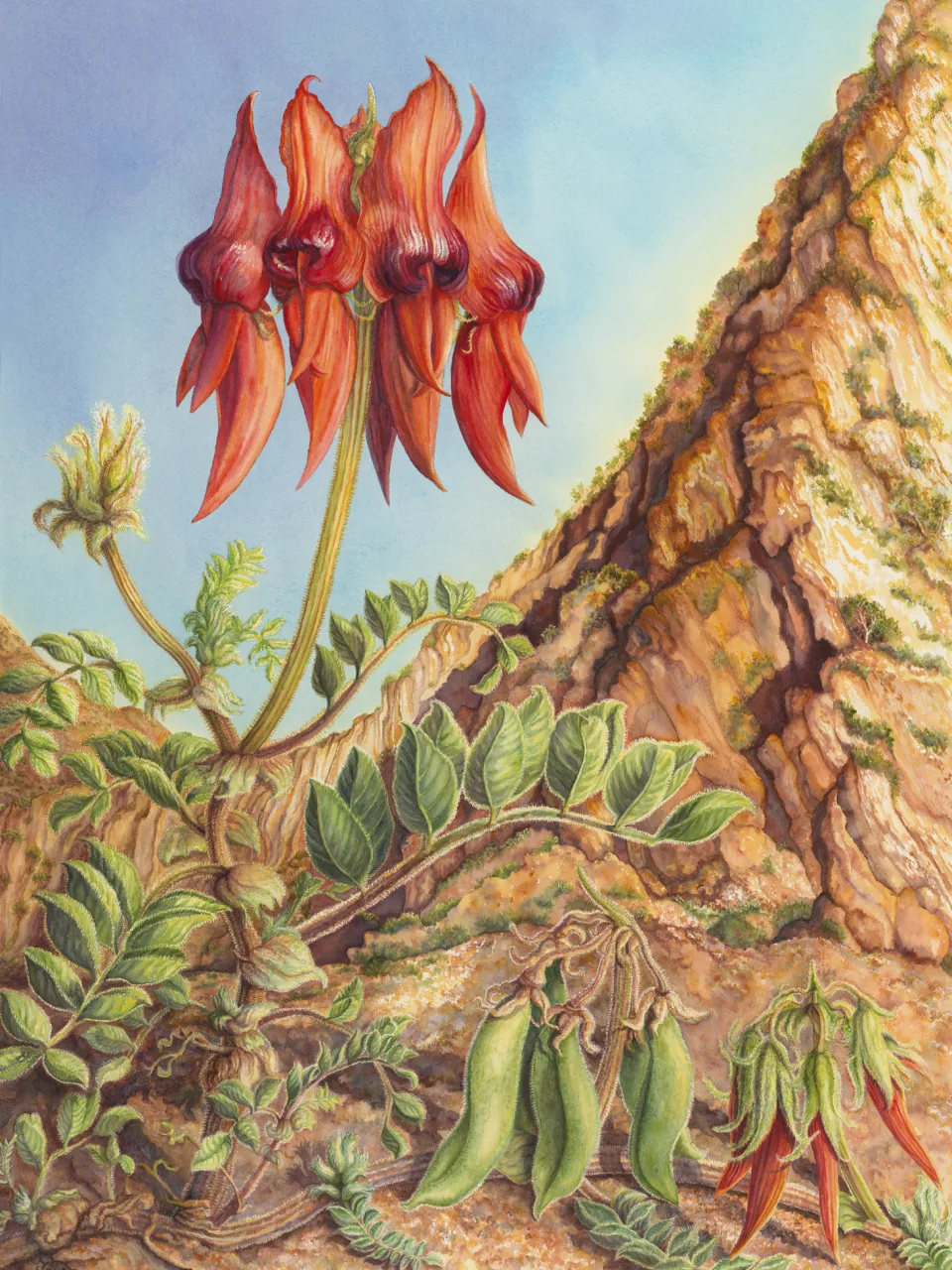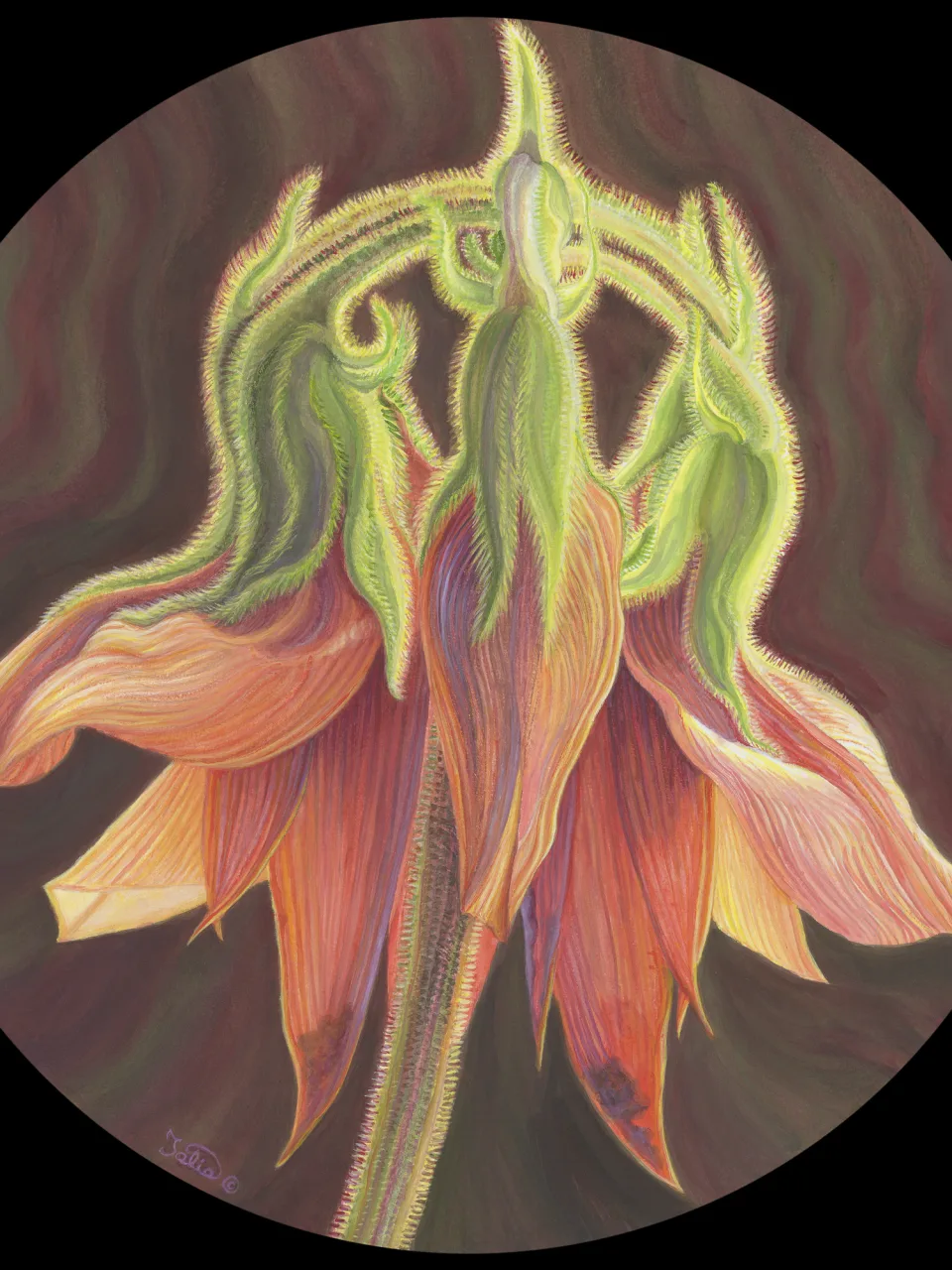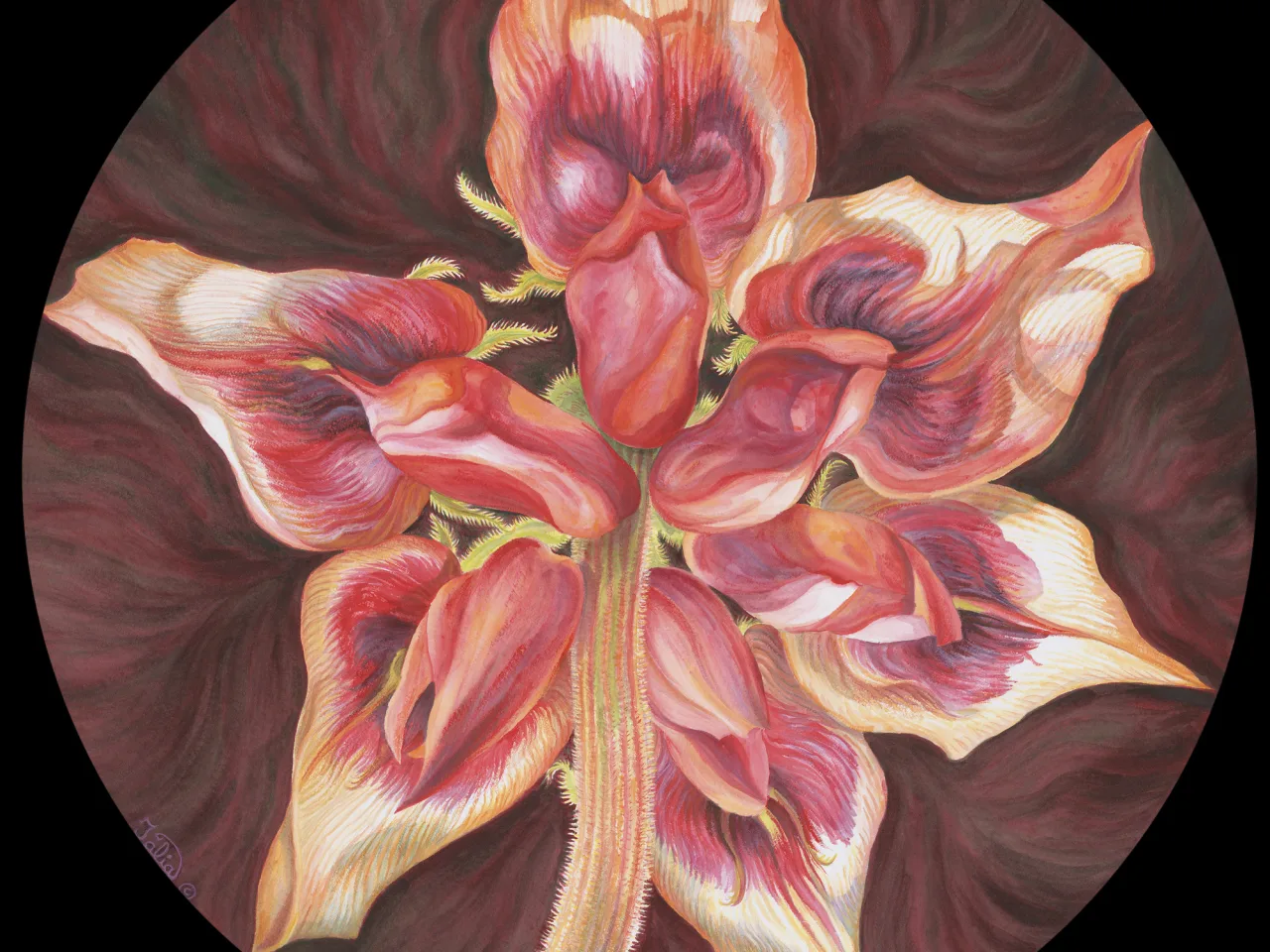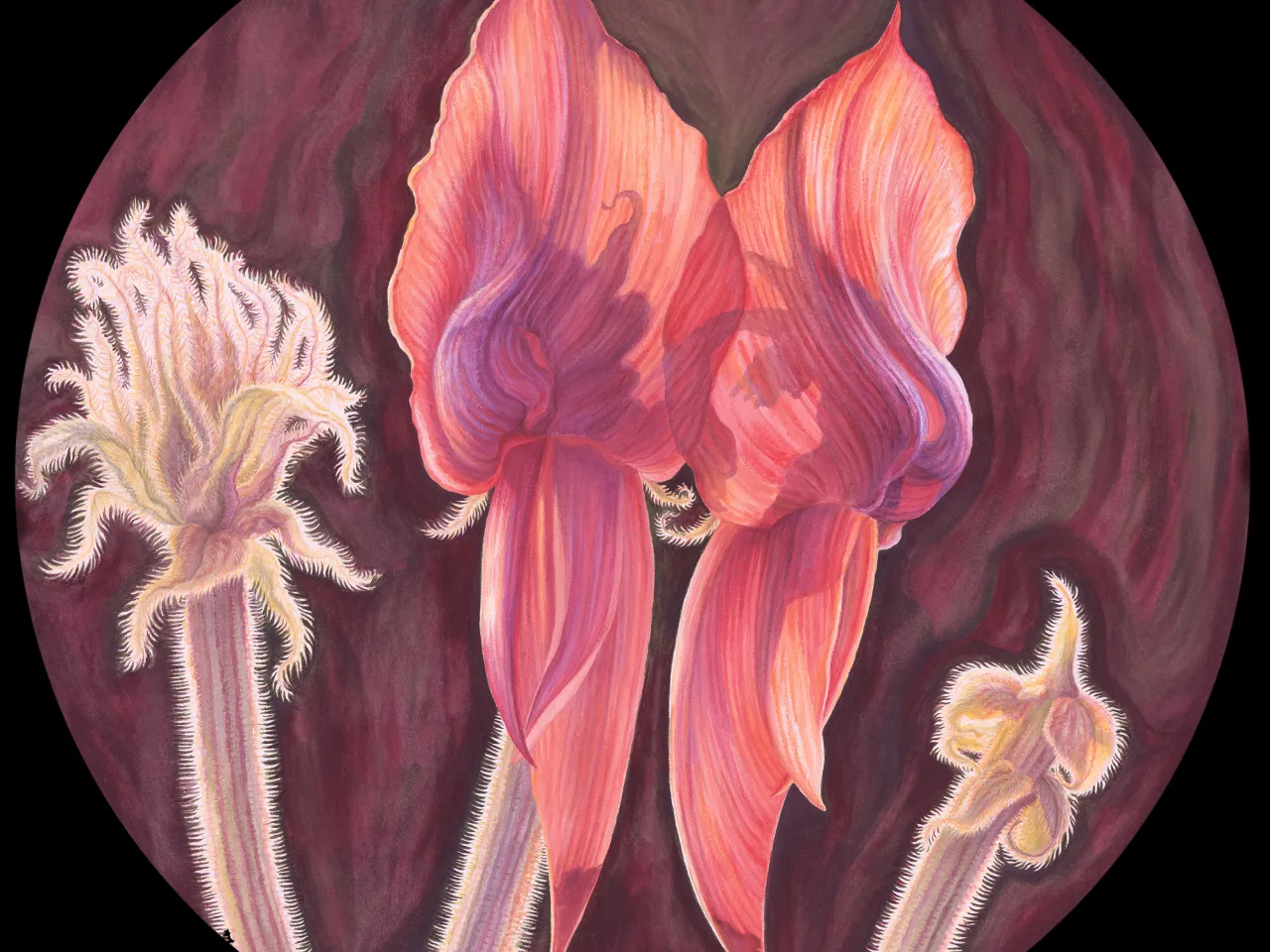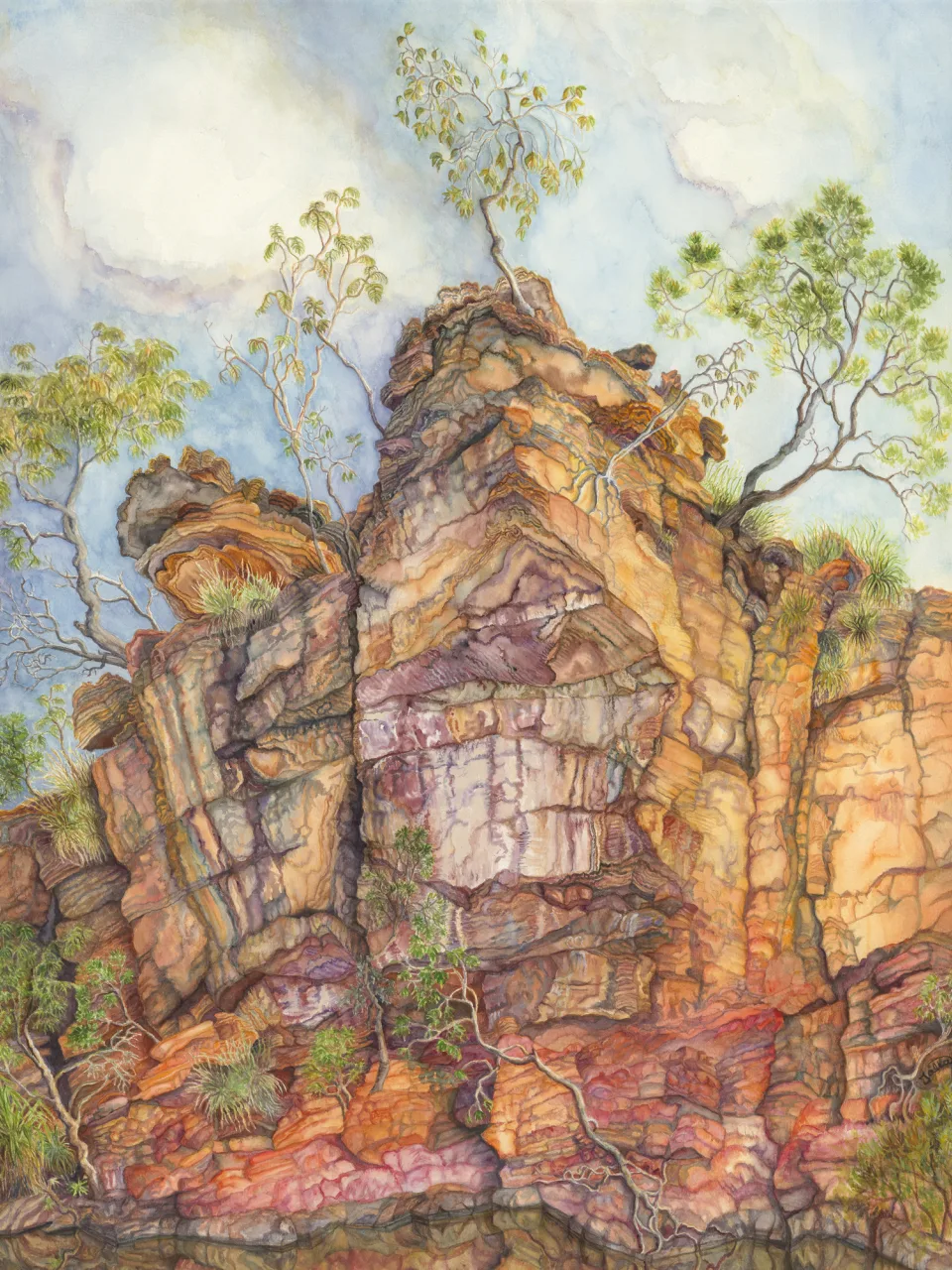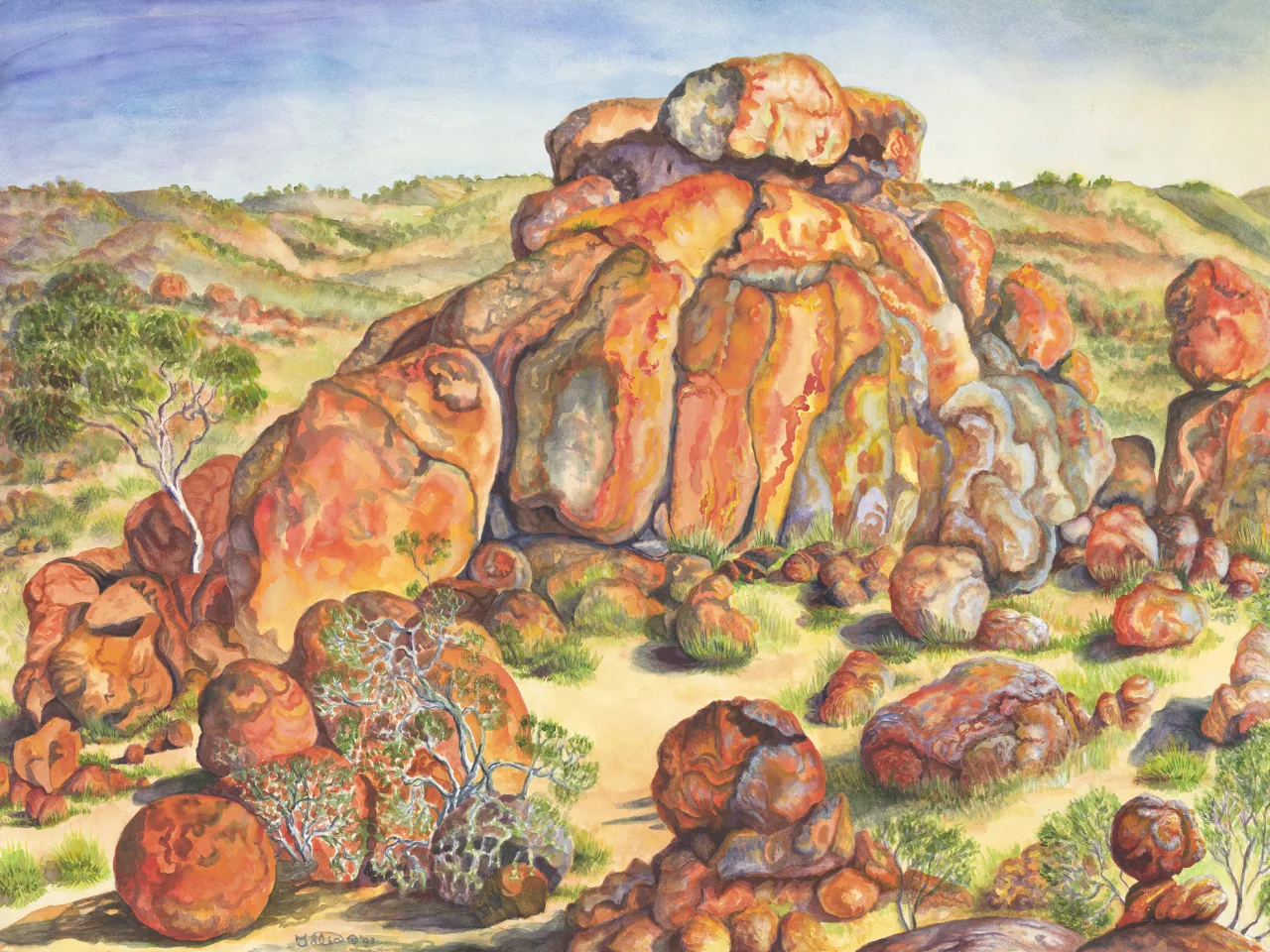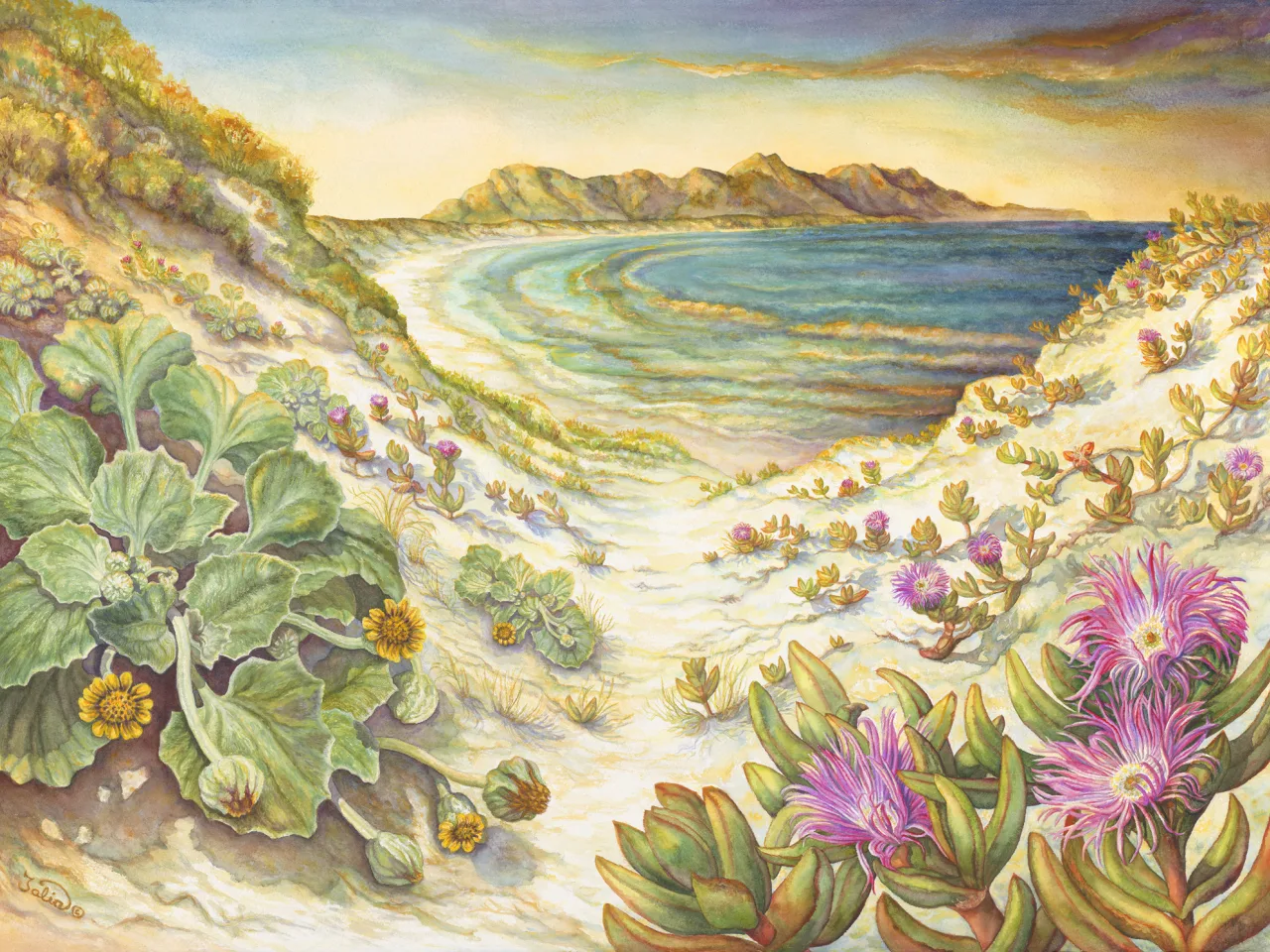Artwork 16 Spherical Silhouette, Fallen Feasts
Section 12
More Southern Conifers—The Araucarians
- 1. Araucaria bidwillii (bunya pine)
Artwork 16
Buy a print
Limited edition giclee archival quality print on 310 gsm Ilford cotton rag (from an original work in watercolour on watercolour paper, 76 cm high x 56 cm wide)
from the artist
In Spherical Silhouette, Fallen Feasts the pleasing spherical outline of the younger tree (the older ones look more elongated) is echoed by the rounded shapes of two fallen female cones. They look a bit like squat bright green pineapples with deep grooves and pale brown pointed scale tips—and yes, the scales are also arranged in spirals! Unlike pineapples, however, these cones are extremely heavy, for they contain numerous overlapping seed scales about 9 cm long by 7 cm wide. Each scale holds a large white seed encased in a hard bone-coloured shell, measuring about 5 cm long by 3 cm wide. These large seeds make a wonderfully tasty feast when lightly roasted. They are rather like chestnuts in flavour, with perhaps a hint of hazelnut or pinenut.
I was fortunate to be able to draw the female cones from life, as they take about 15 months to mature after pollination, and only produce fruit in any numbers every 3 years or so. Since the female cones grow high in the treetops, waiting until they ripen and drop can be a very time-consuming business! When they do drop in late summer, it is also a very dangerous business, as the ripe cones can measure 21 cm in diameter by 26 cm in height, and weigh 10 kg or more. They can injure or kill when falling from 30 or 40 m. Many park attendants put guard rails around fruiting trees to protect the unwary. A ranger at Cumberland State Forest in suburban Sydney apparently had to close her forest for a month in 1999–2000 because of the danger to walkers, as the cones there were even larger than the ones I drew, measuring 40 cm in diameter and weighing in excess of 11 kg (Woodford, 2005/2007).
Adelaide has many bunya trees growing as feature trees, and I was delighted to be able to draw the cones and seeds from life. Needless to say, we feasted on the delicious roasted nuts, and shared this special treat with friends, because each female cone may hold as many as 100 or more nuts, and is definitely “festival food”. Vic Cherikoff notes in his Bushfood Handbook that Aboriginal Australians gathered for bunya feasts every three years or so when fruiting was most abundant, at least until 1875 (1989/2000).
